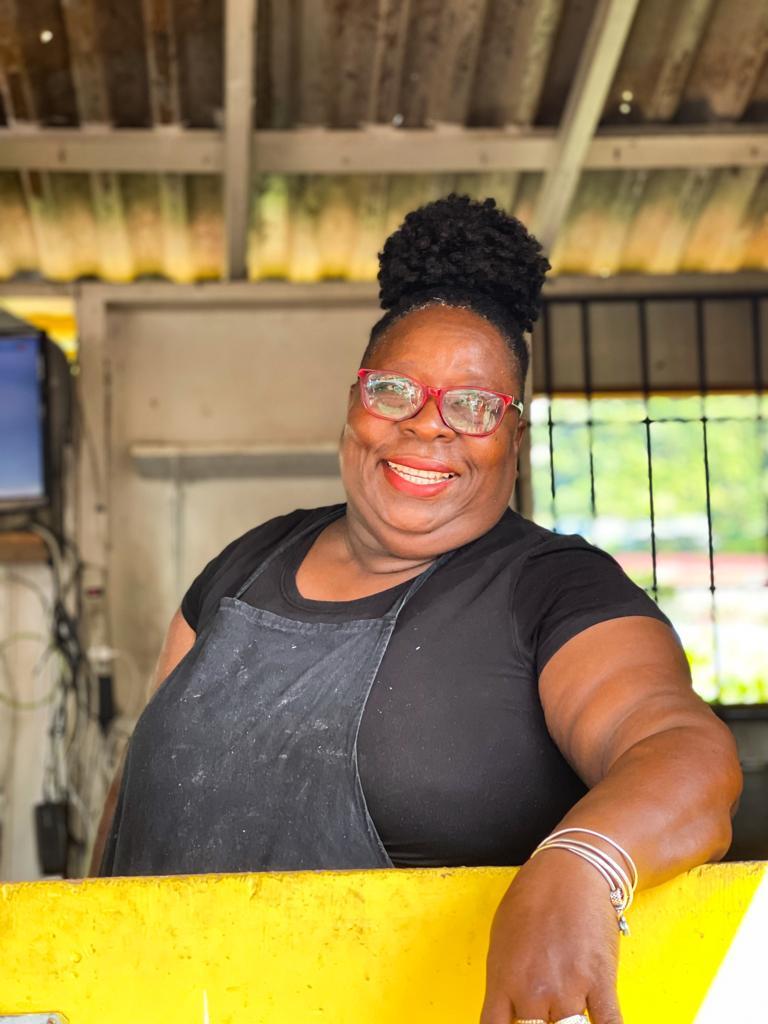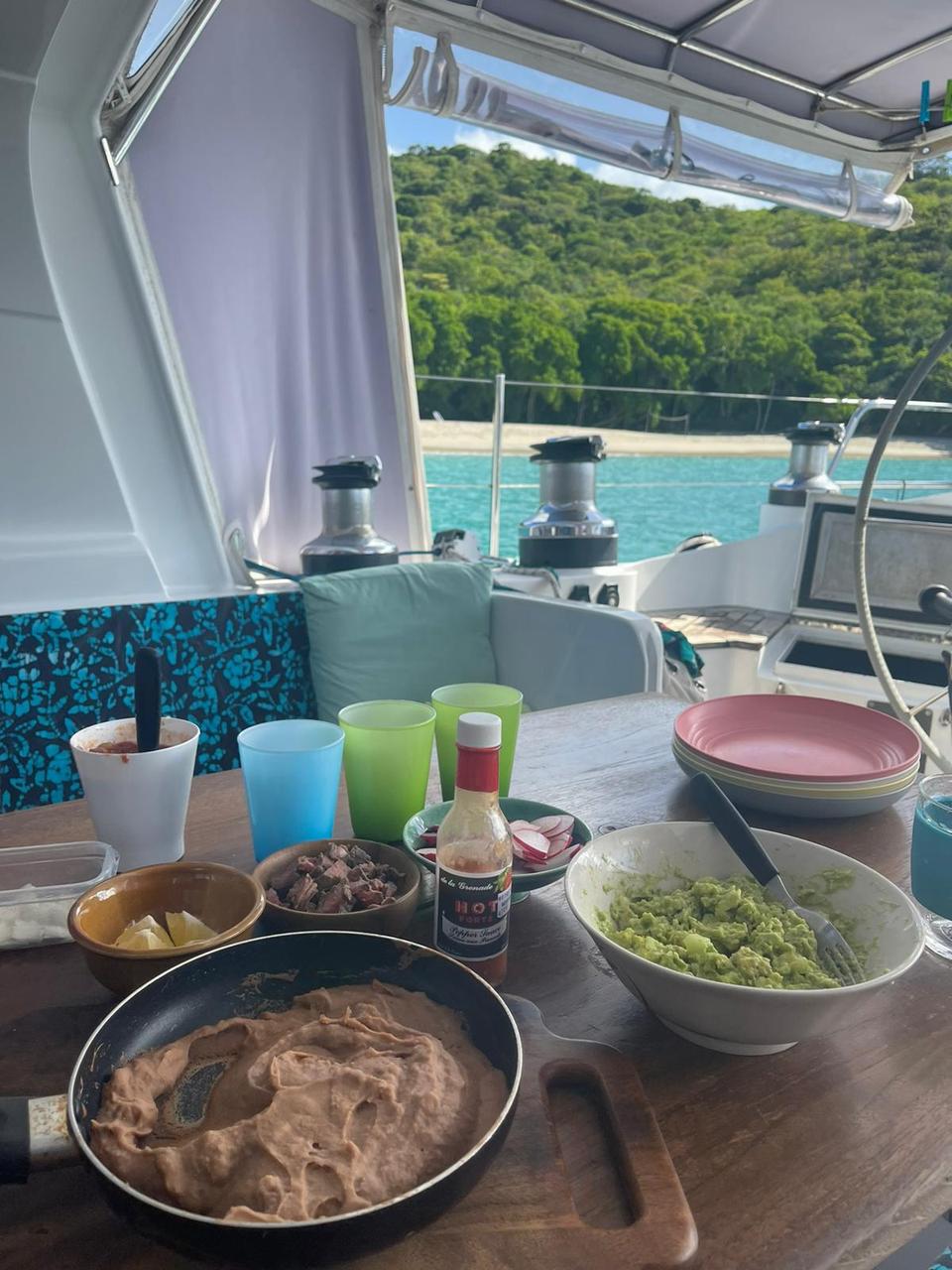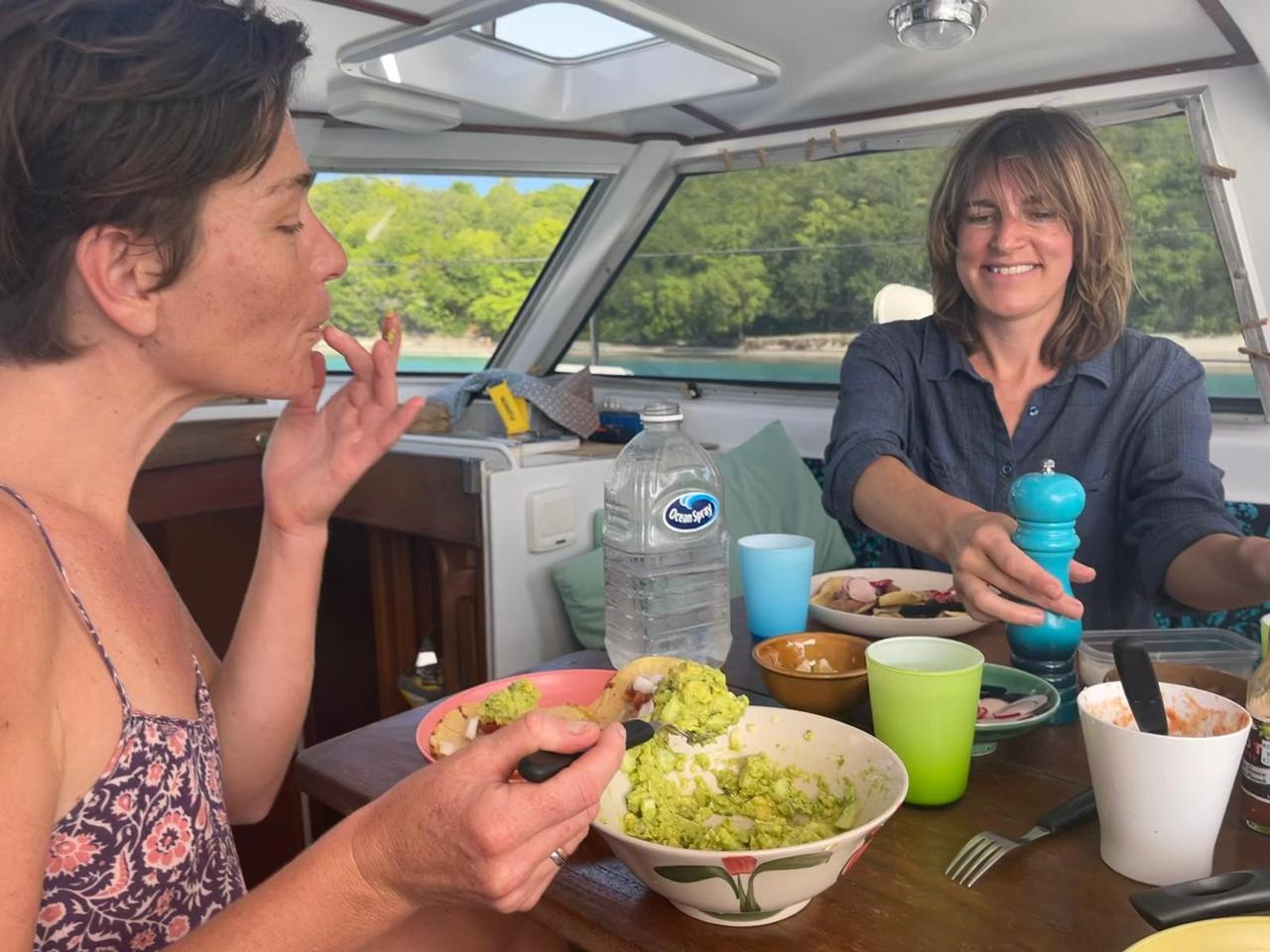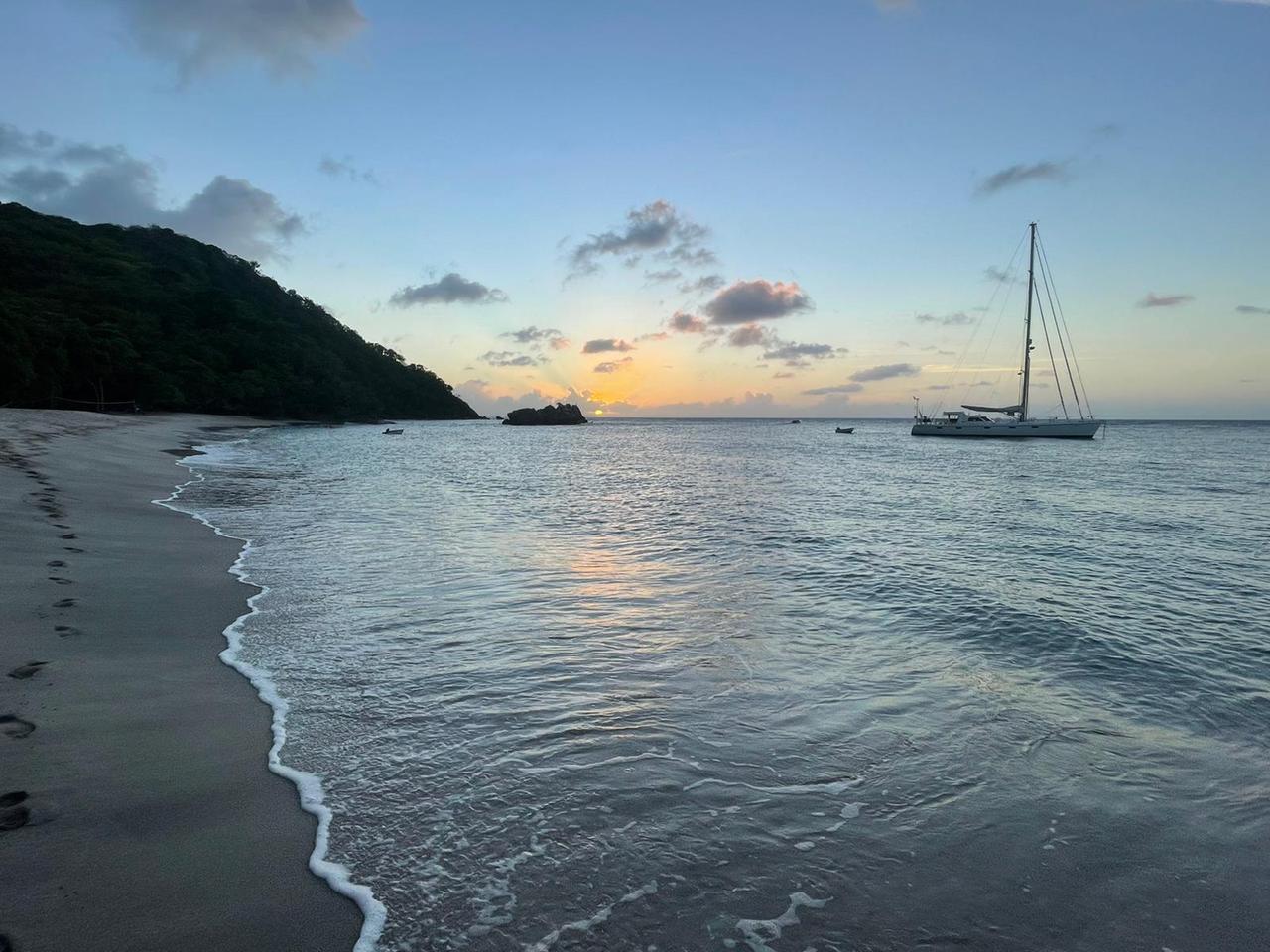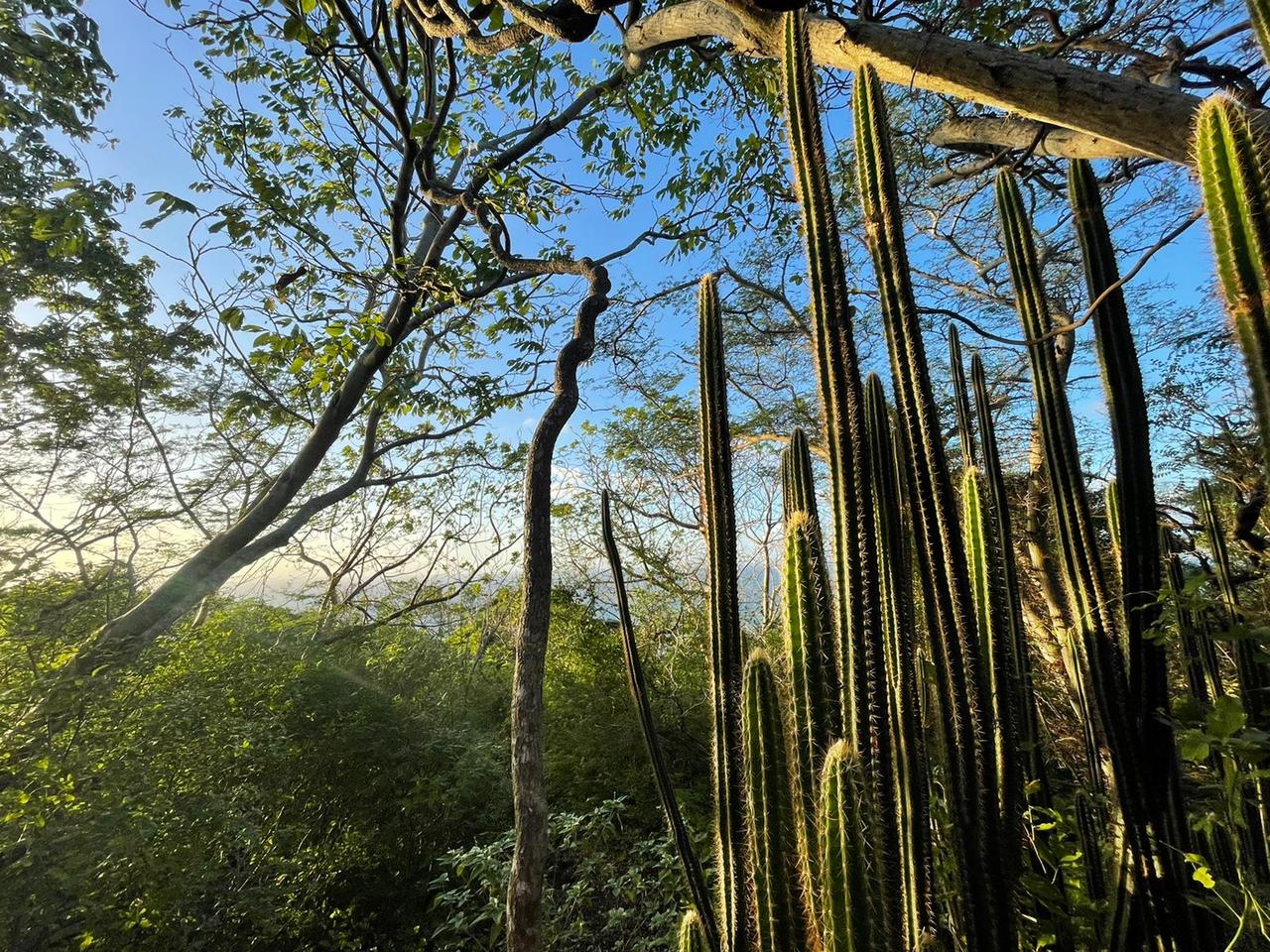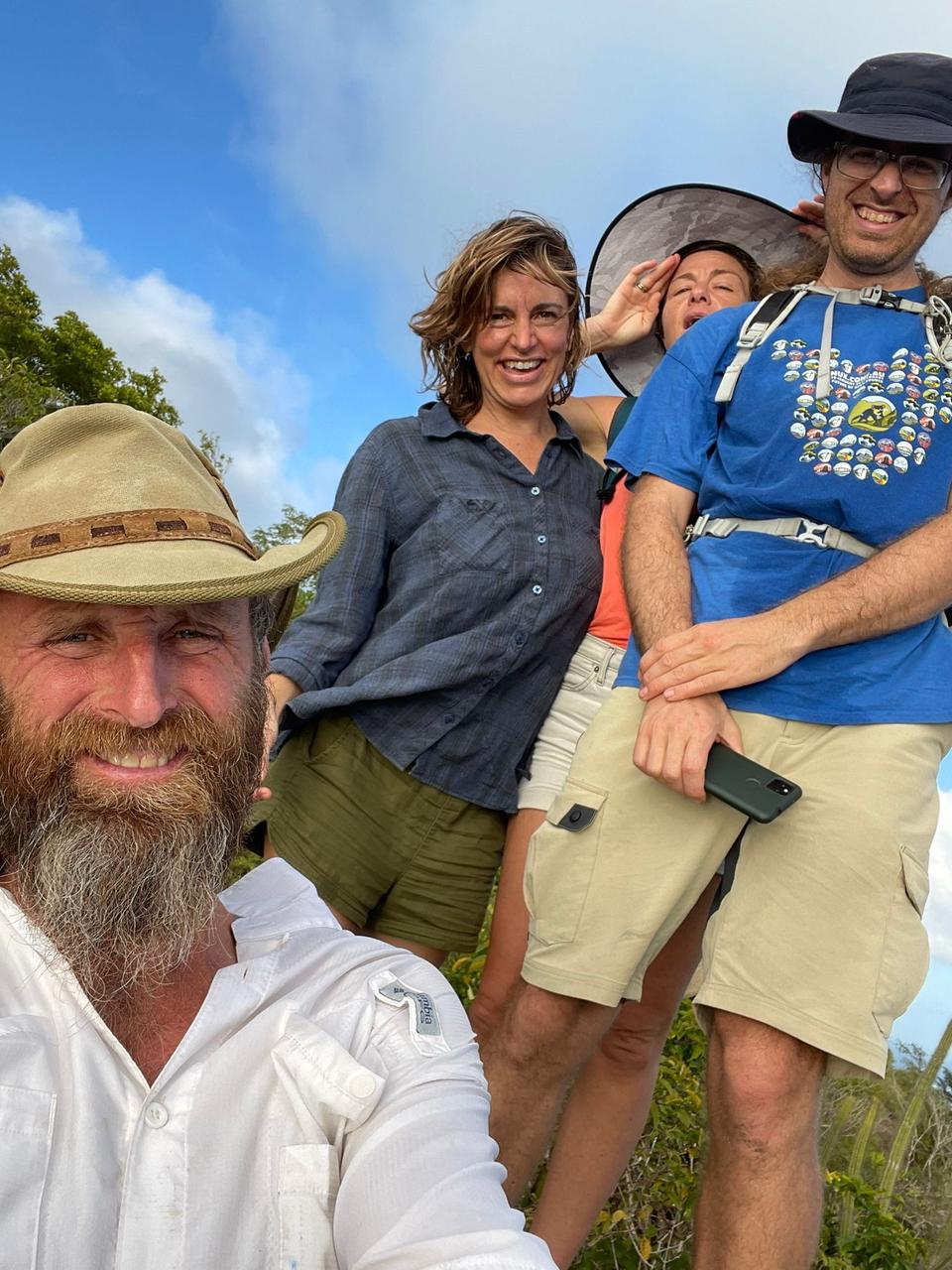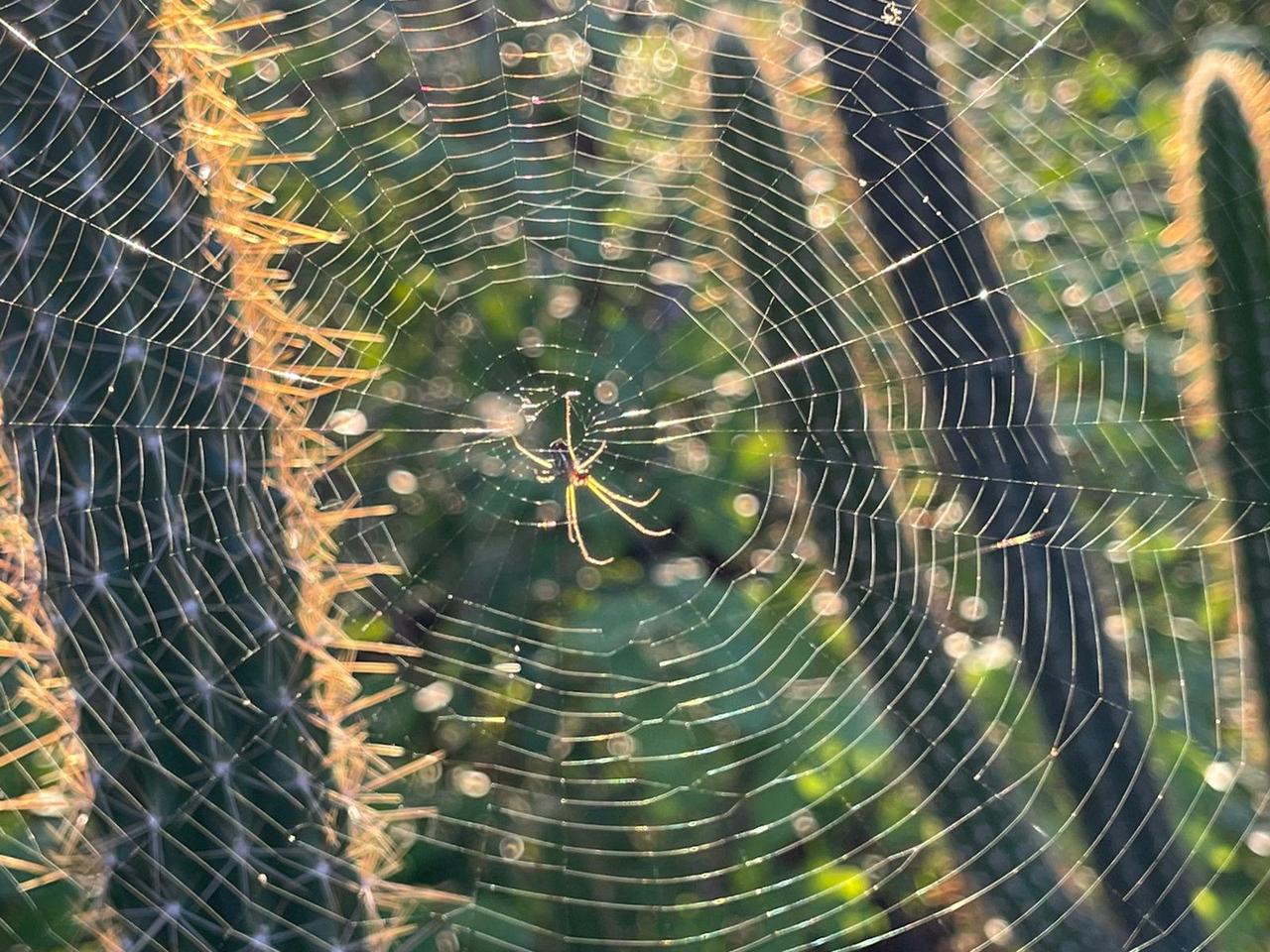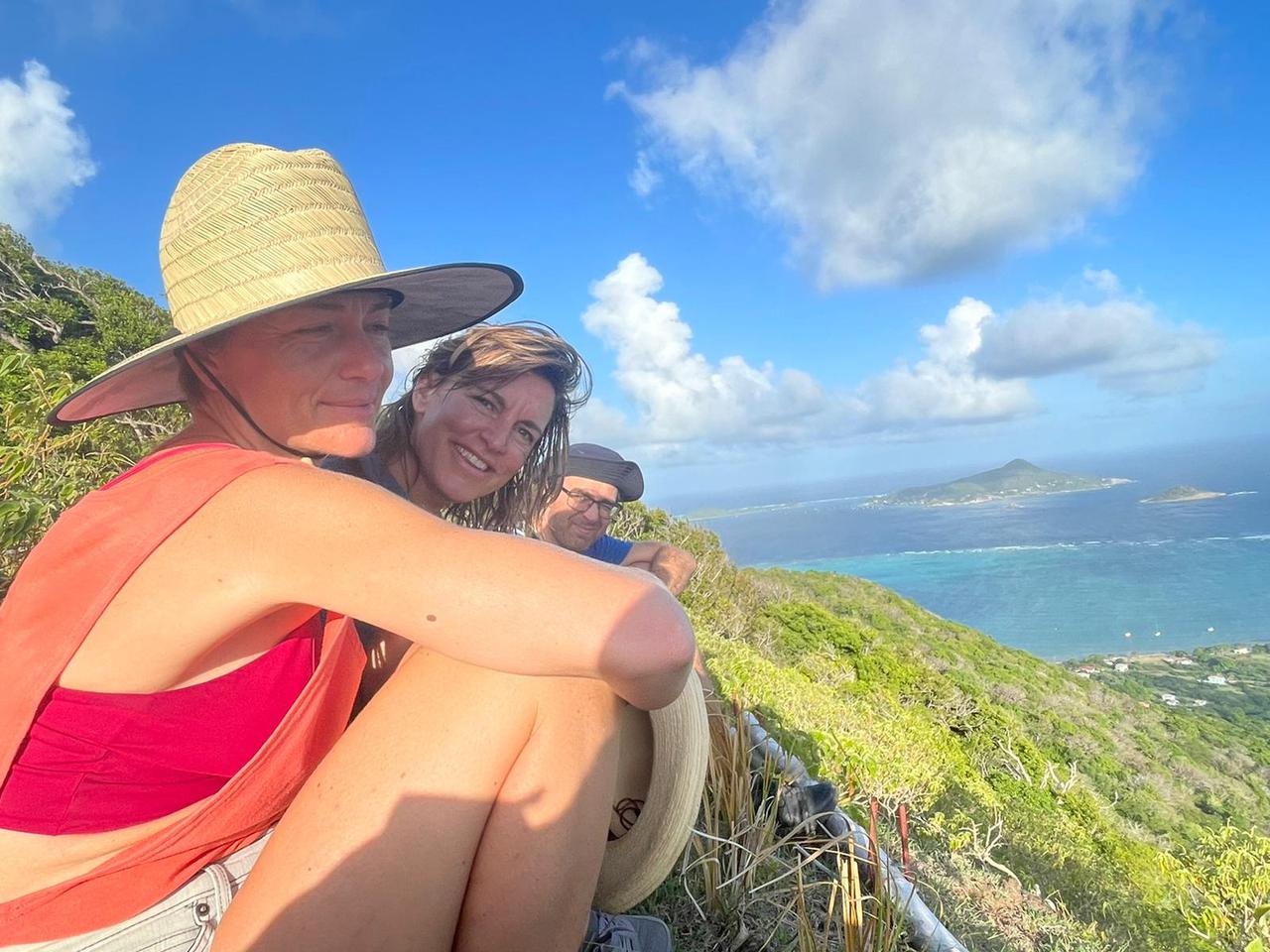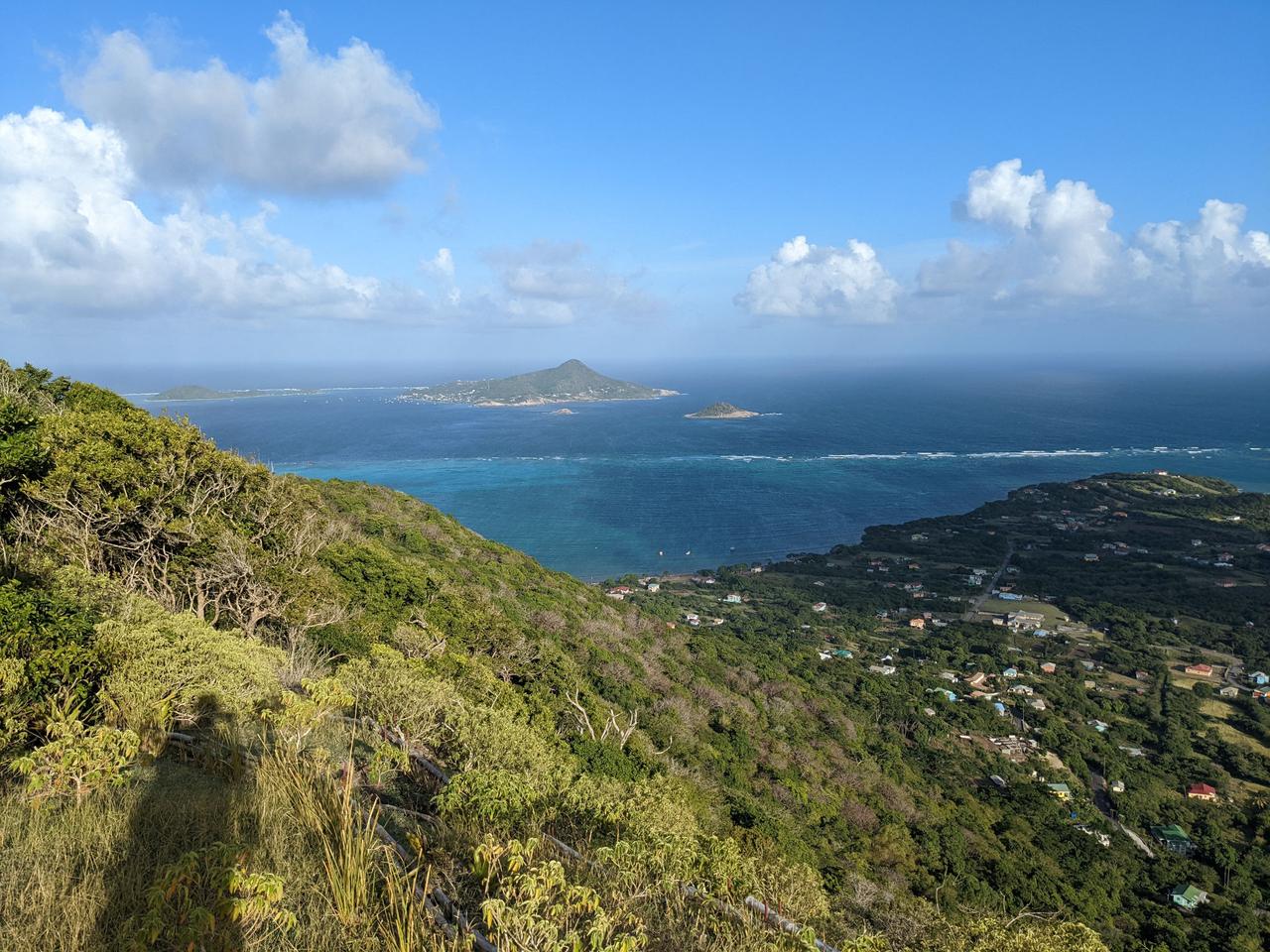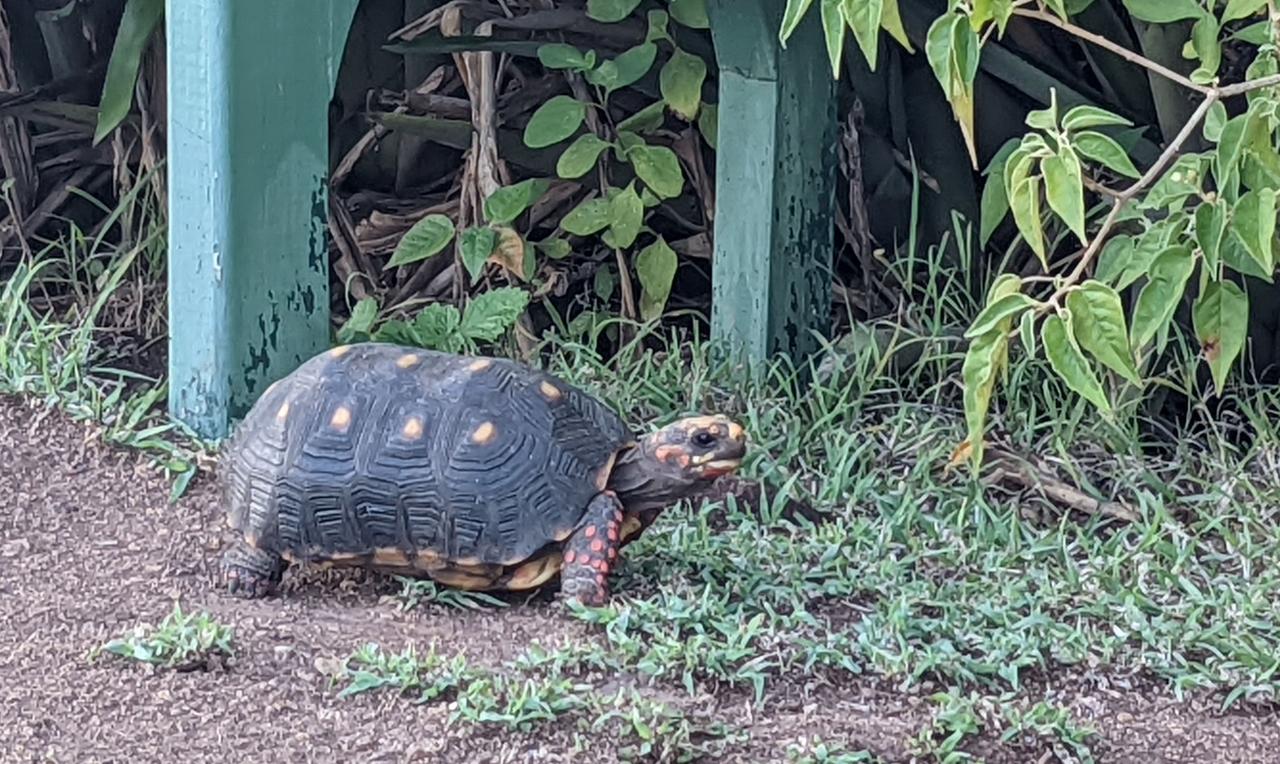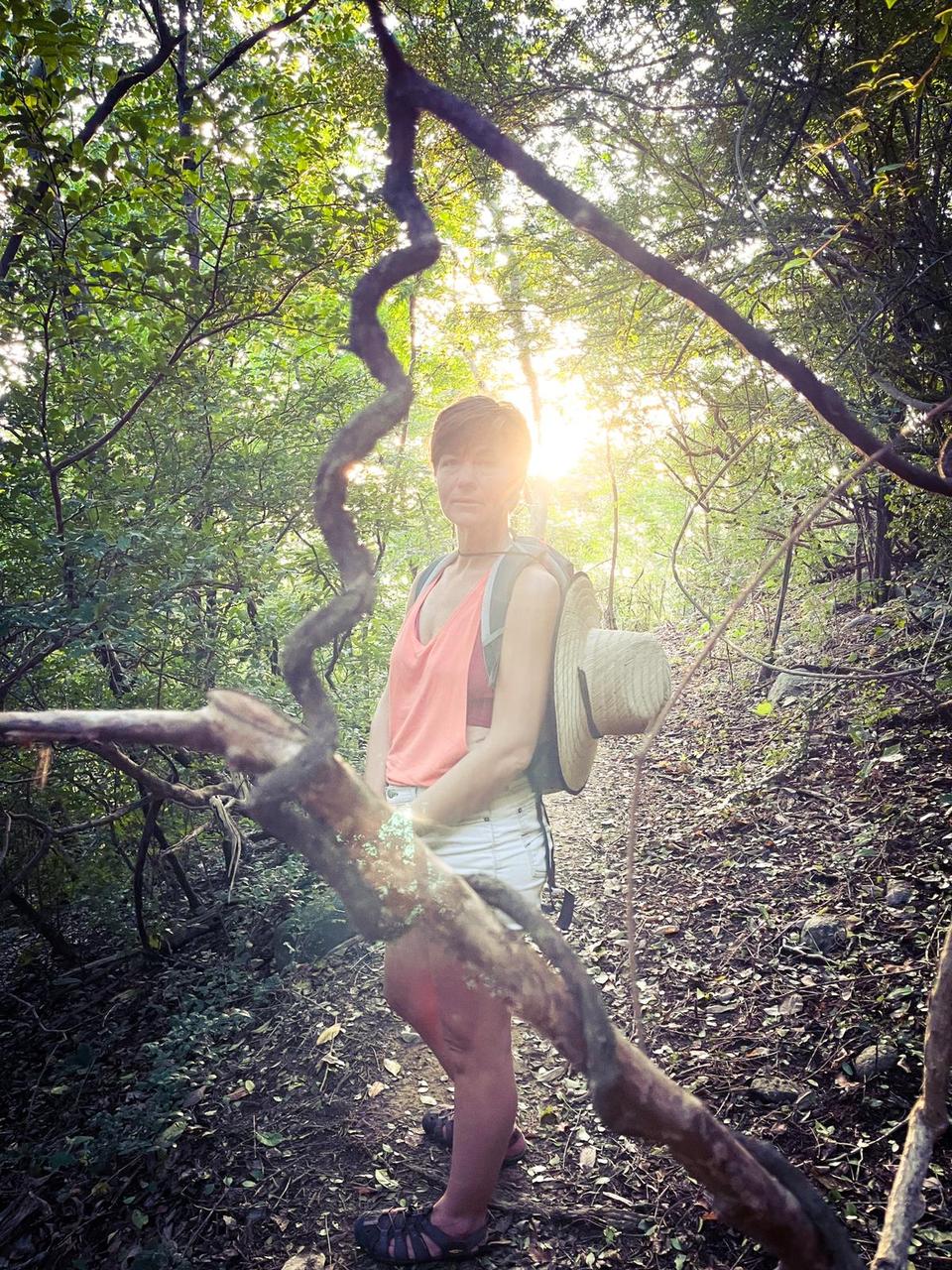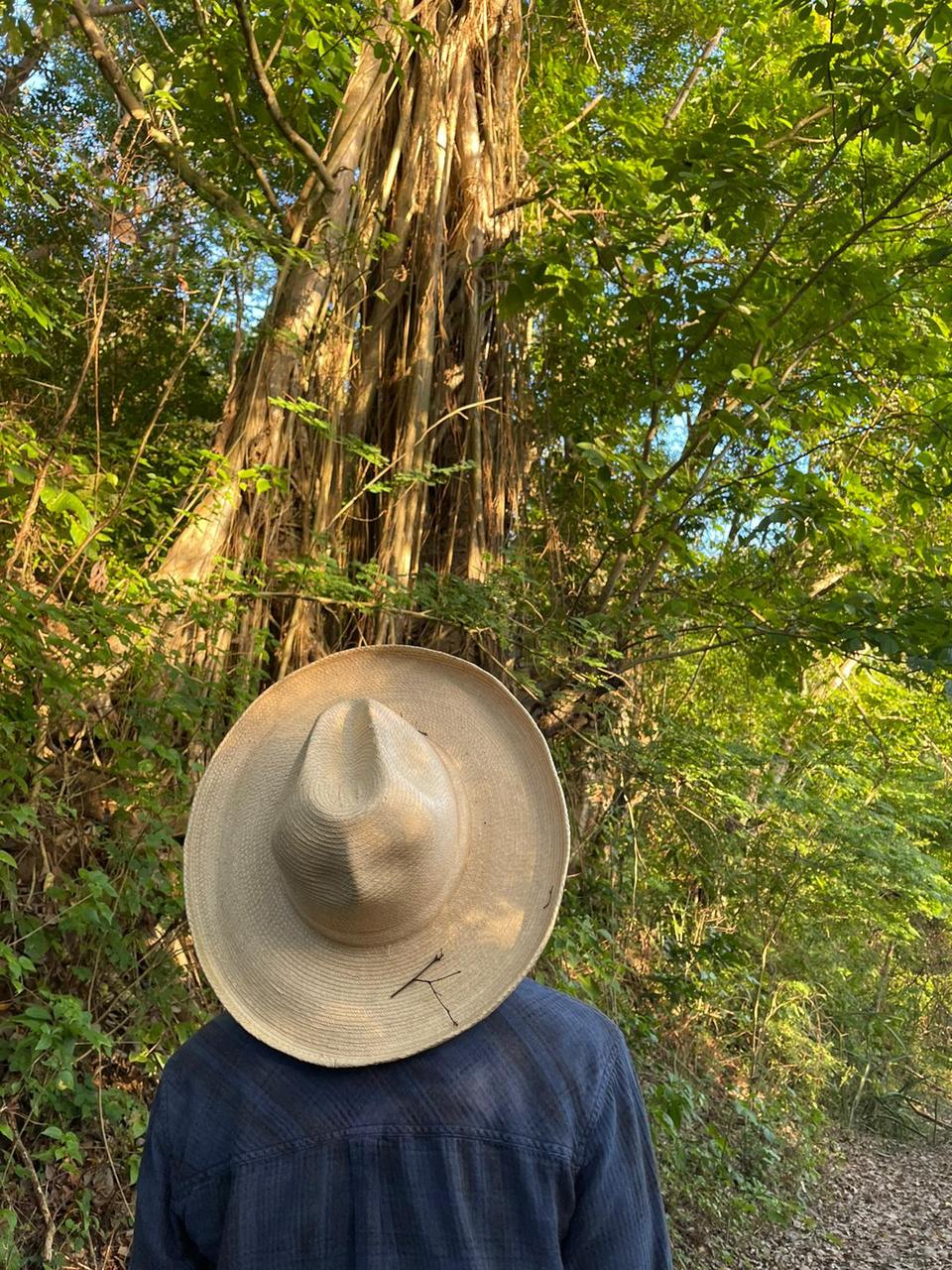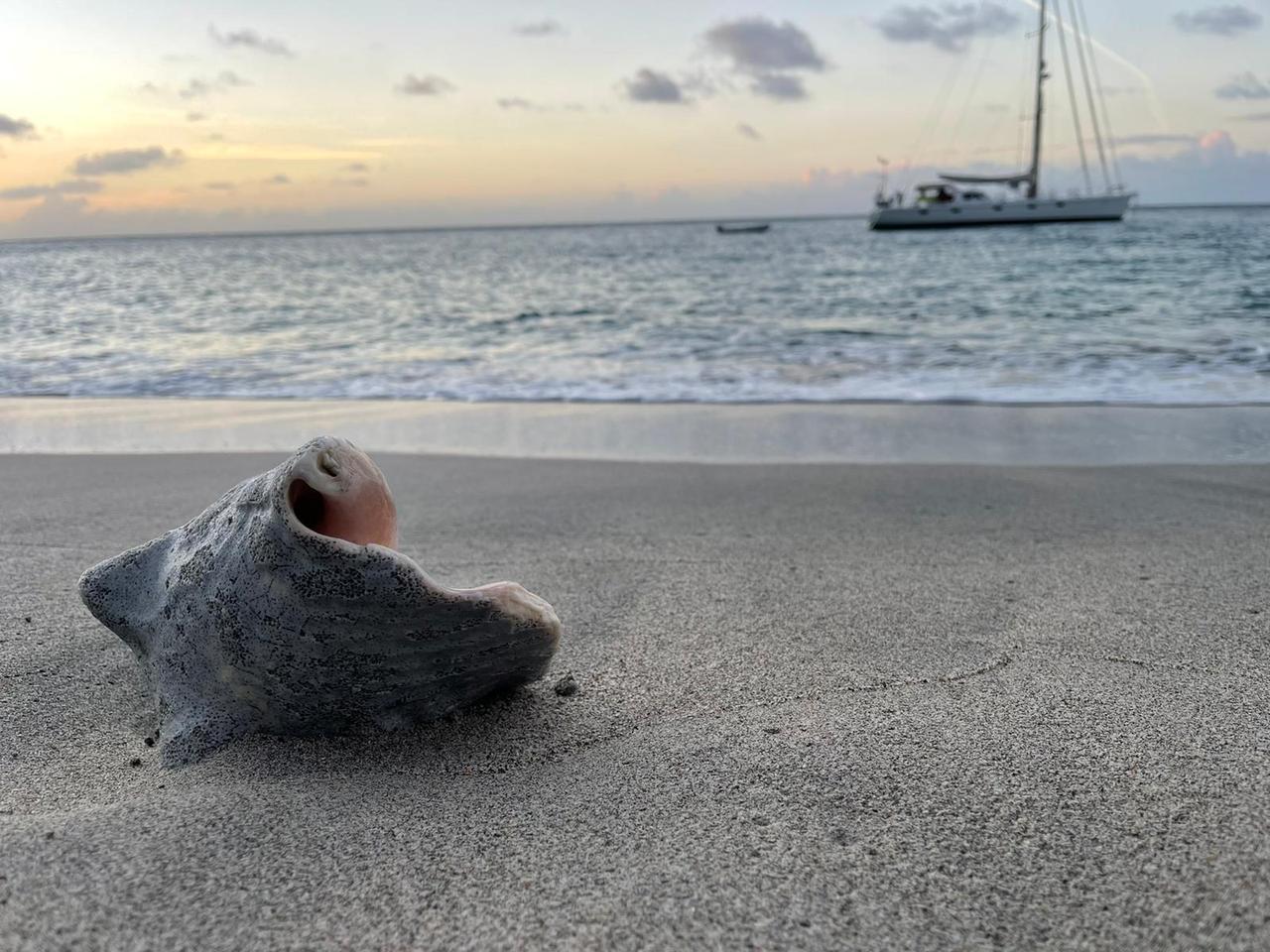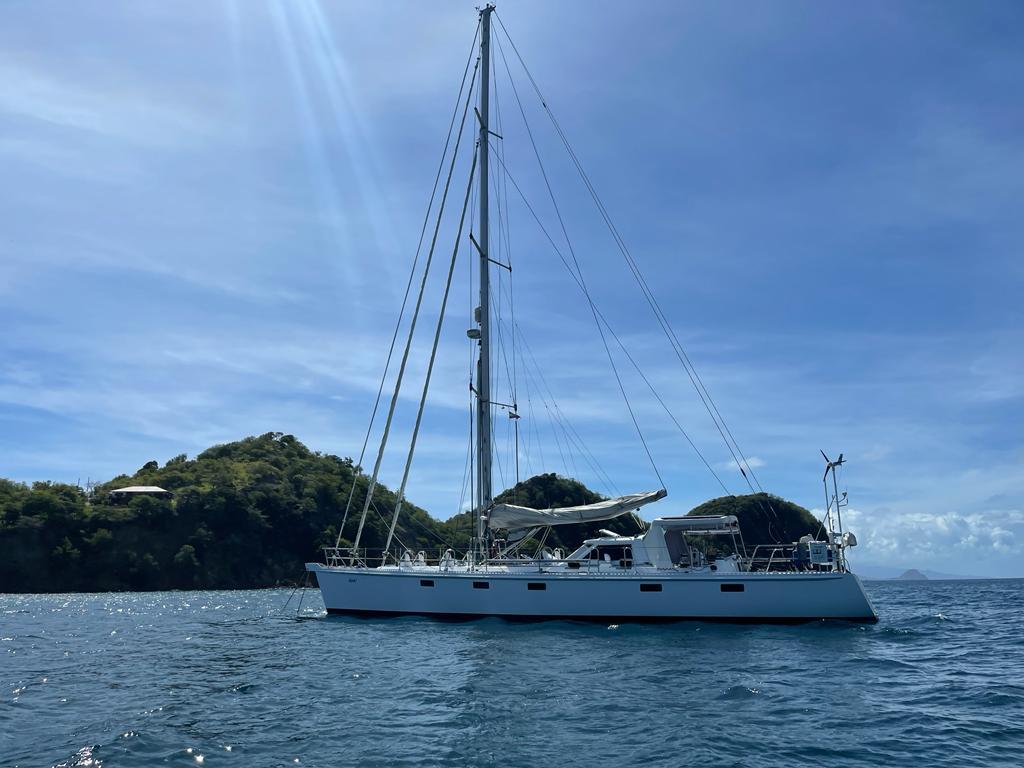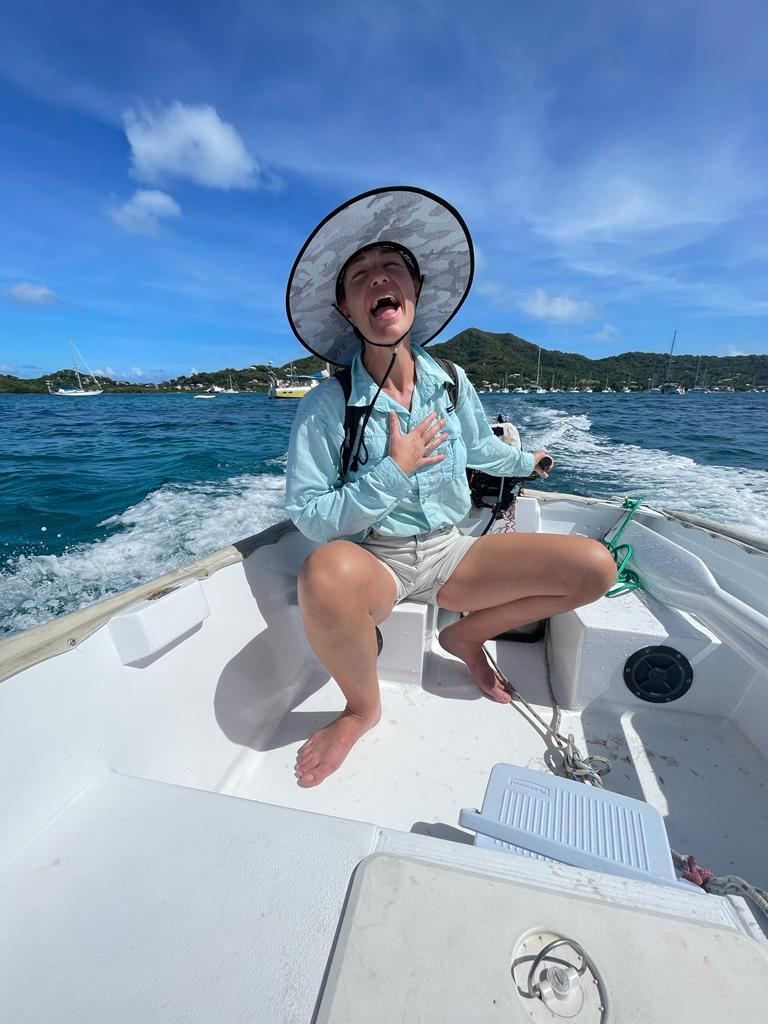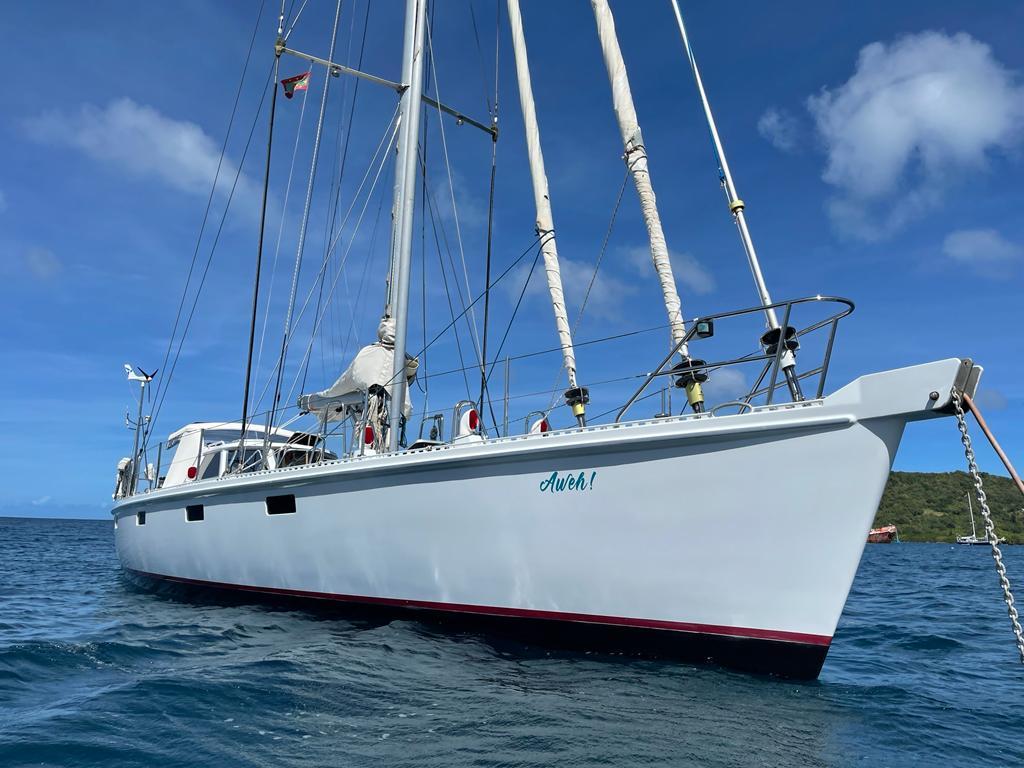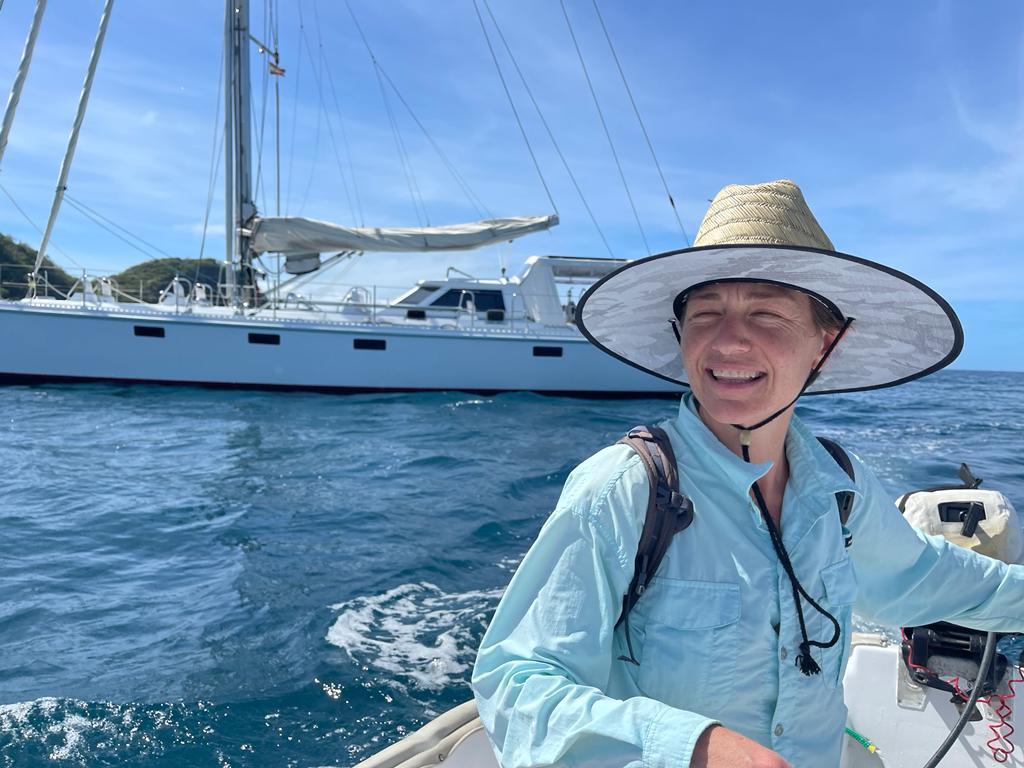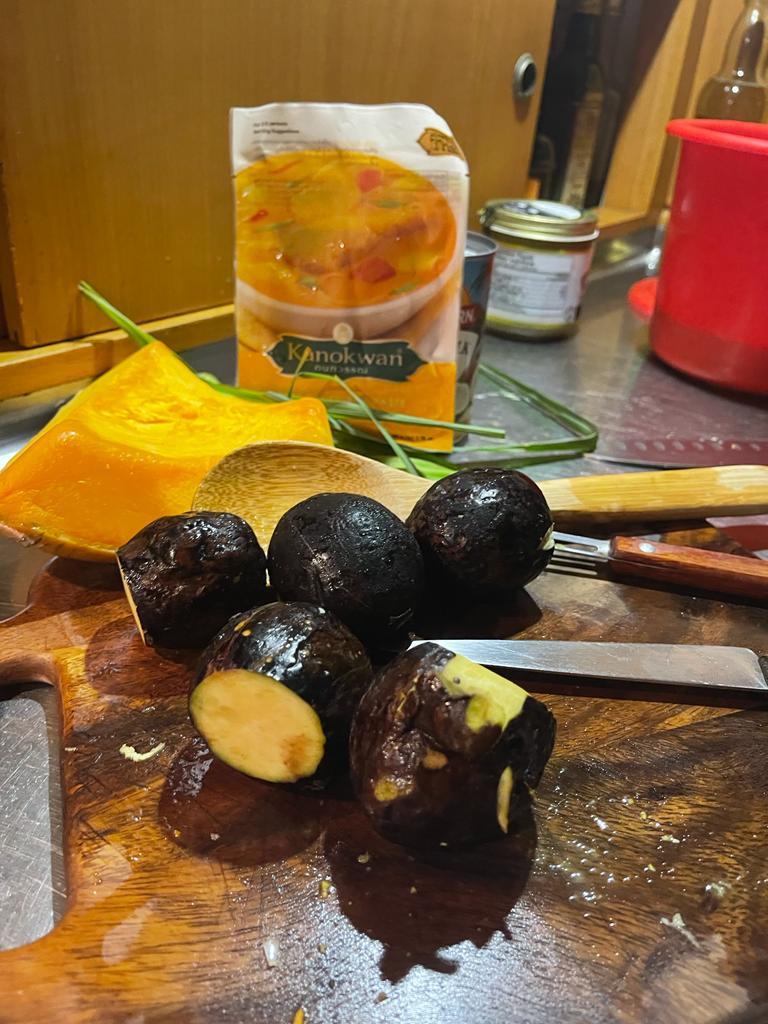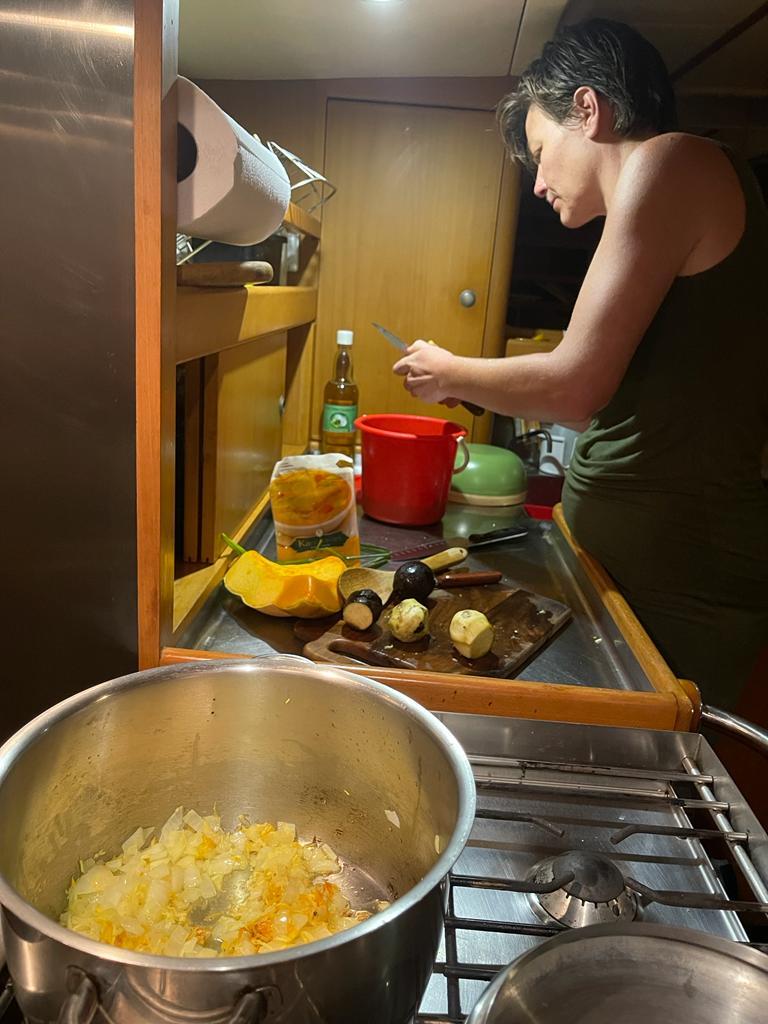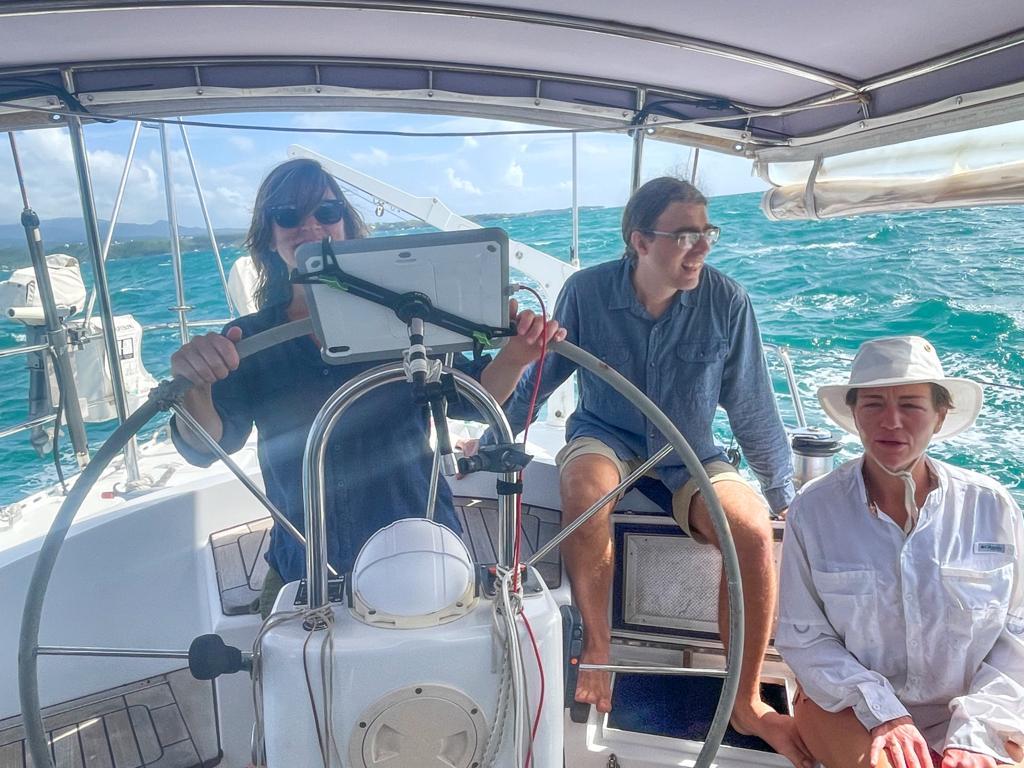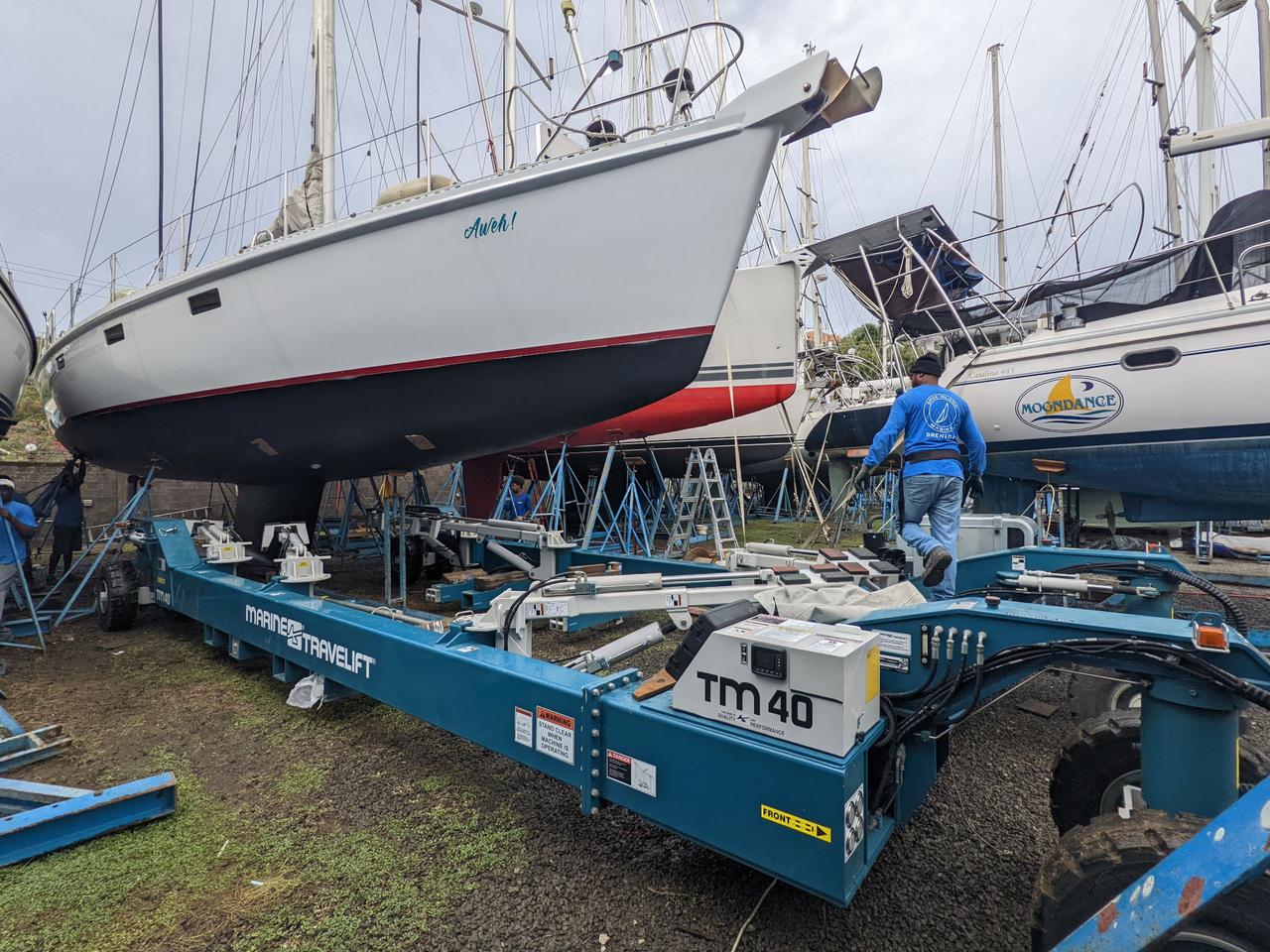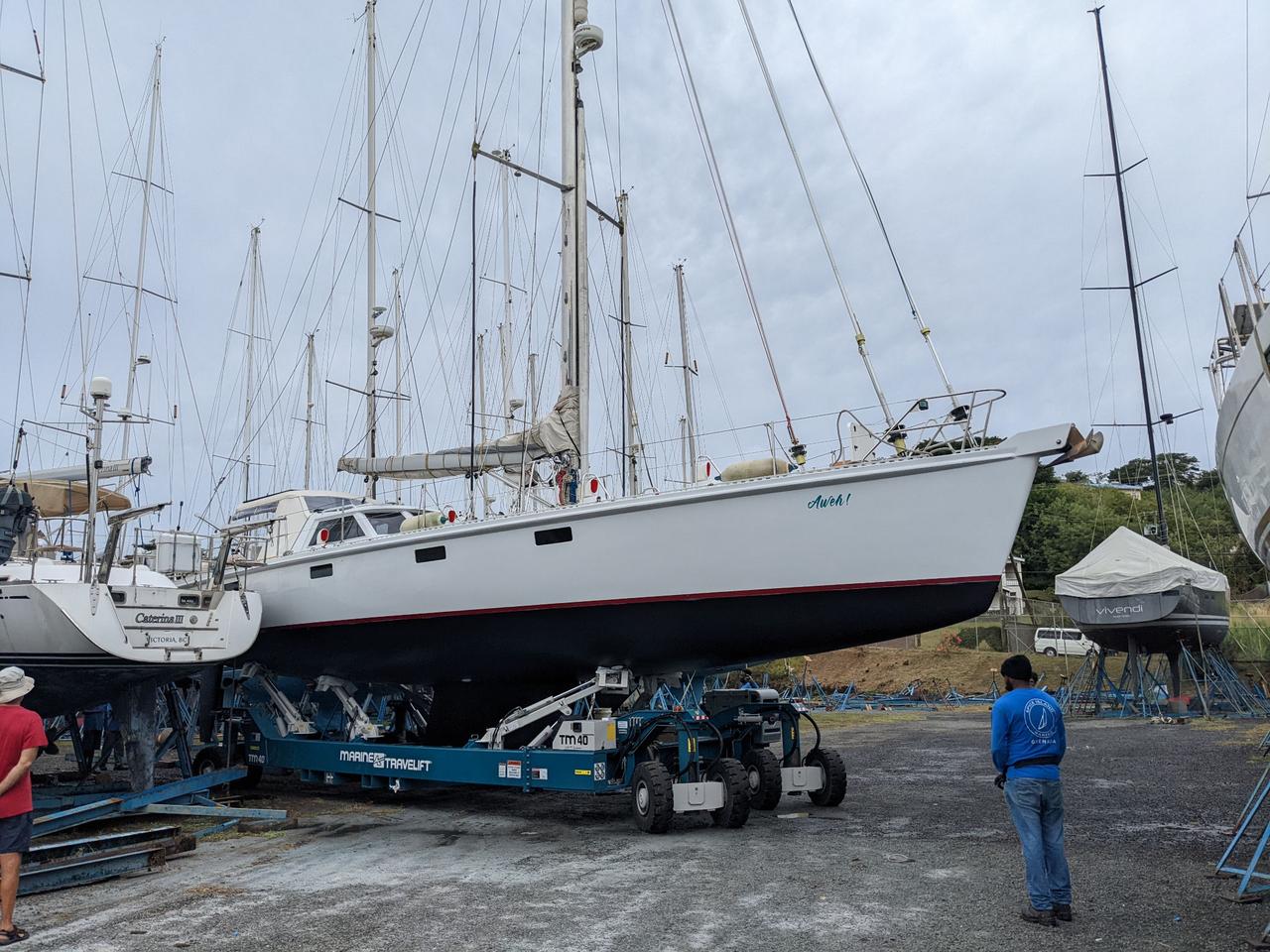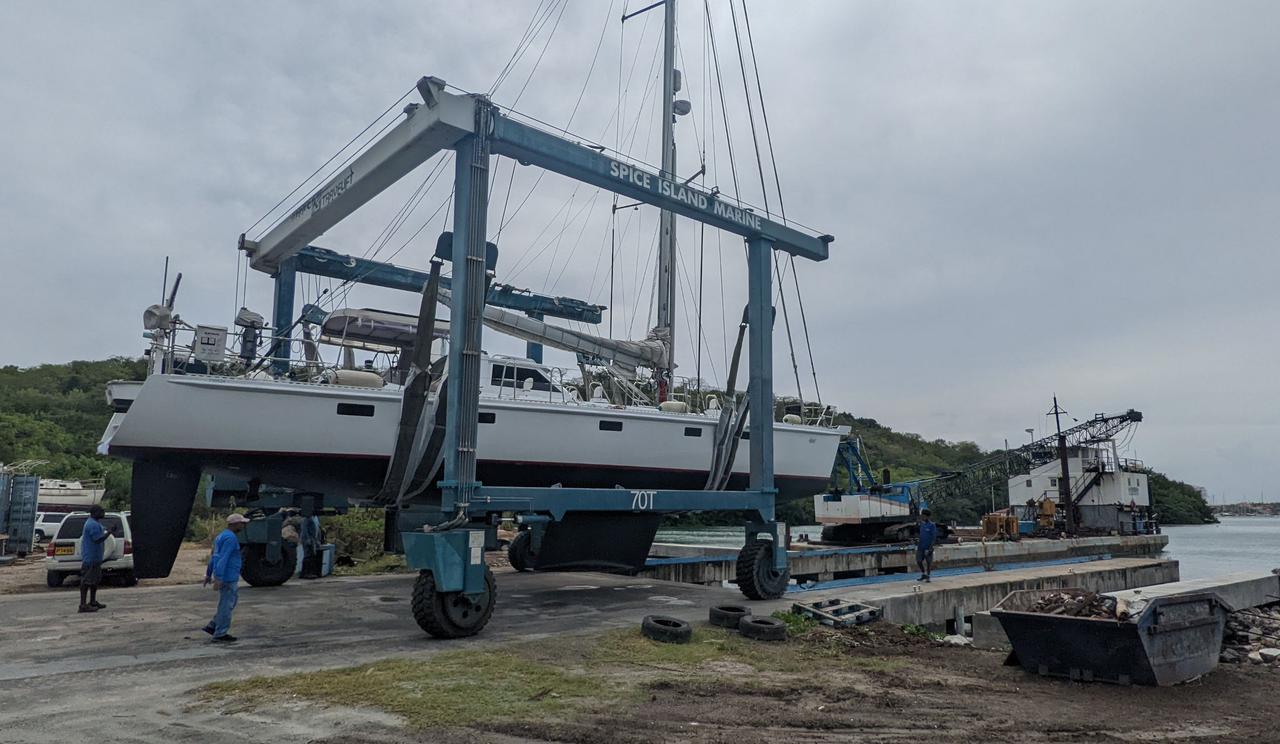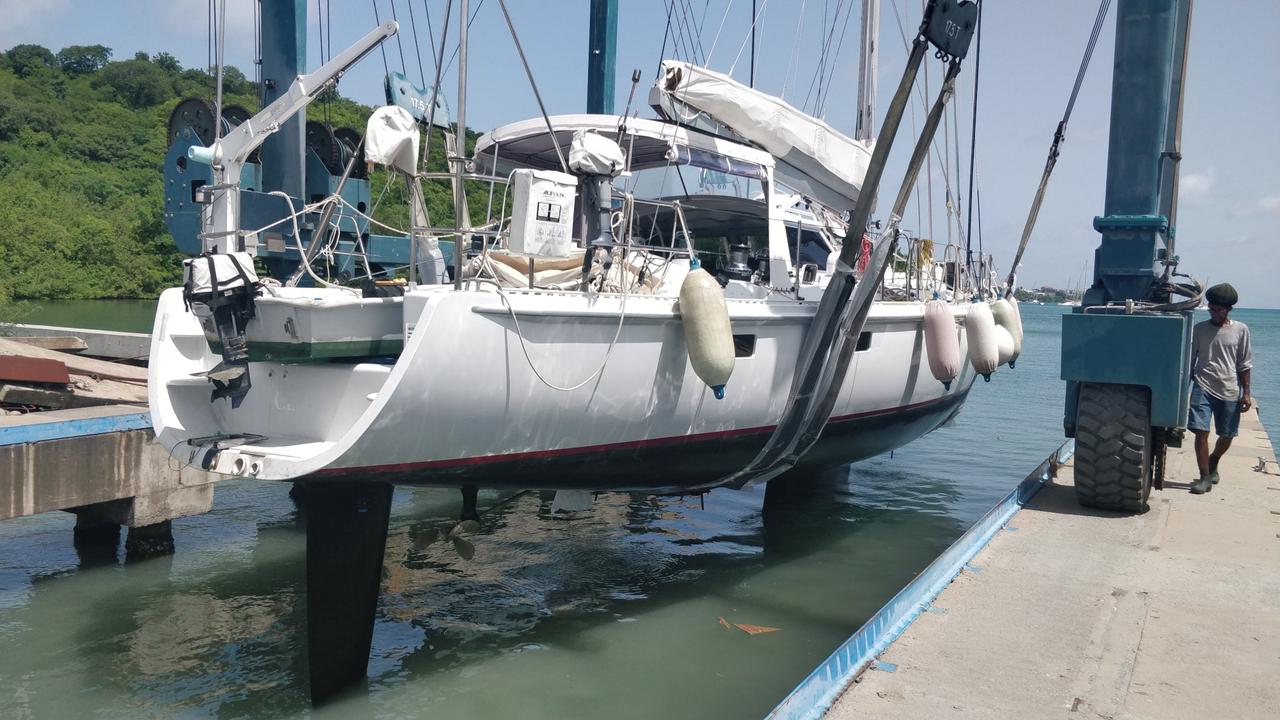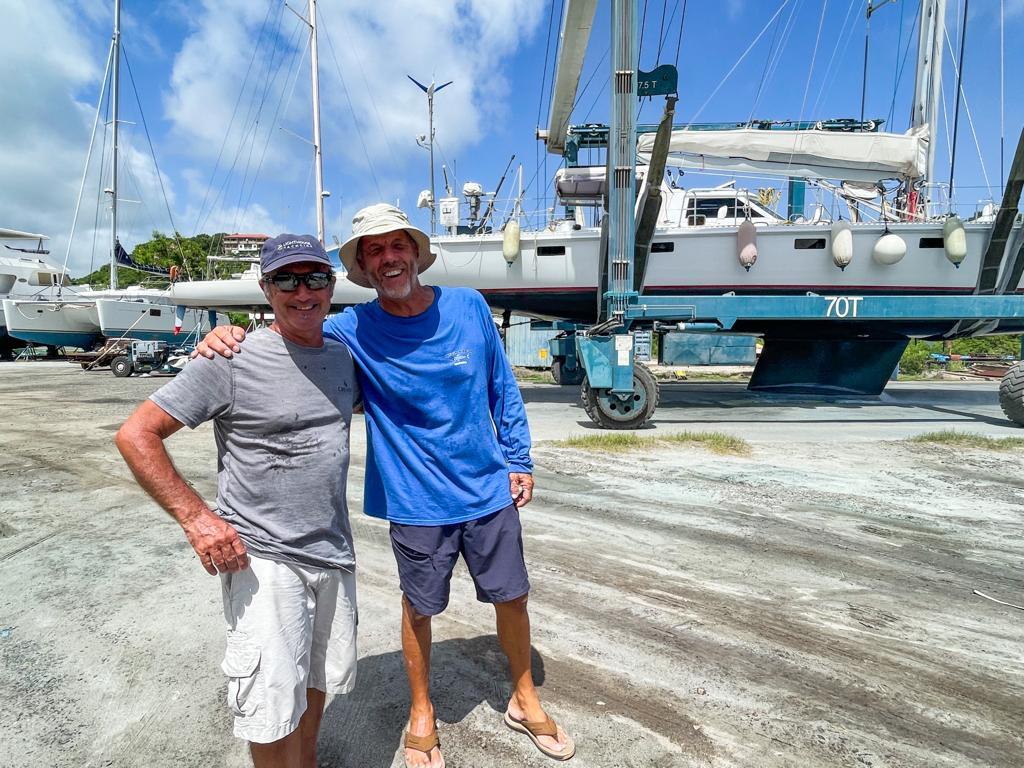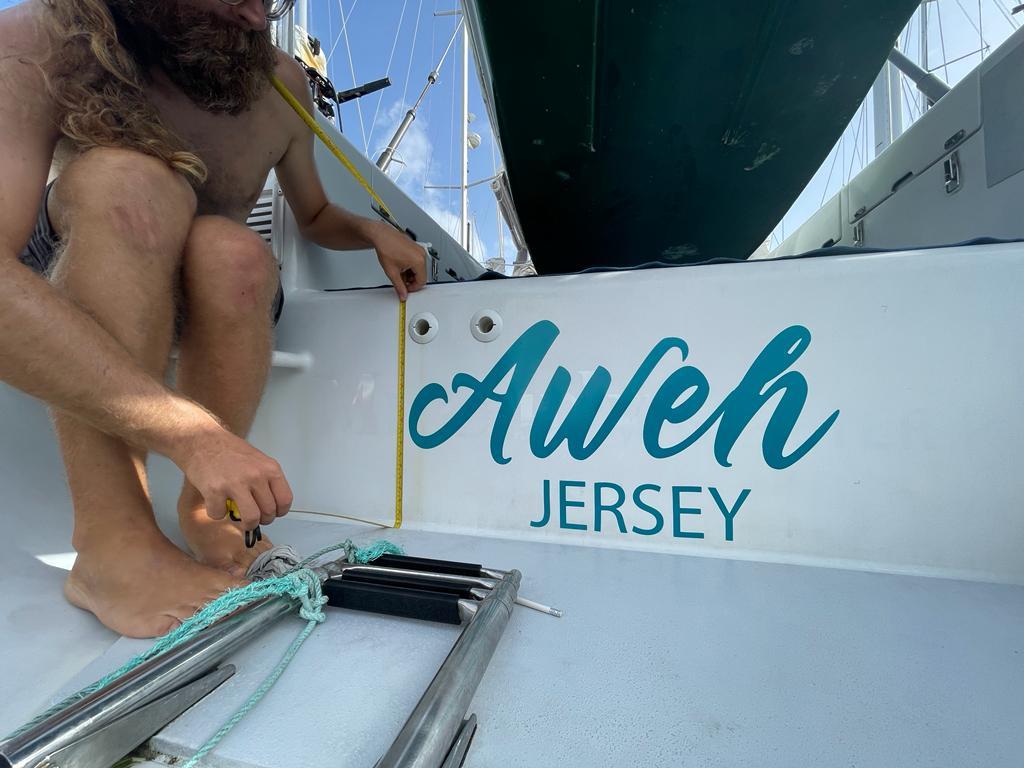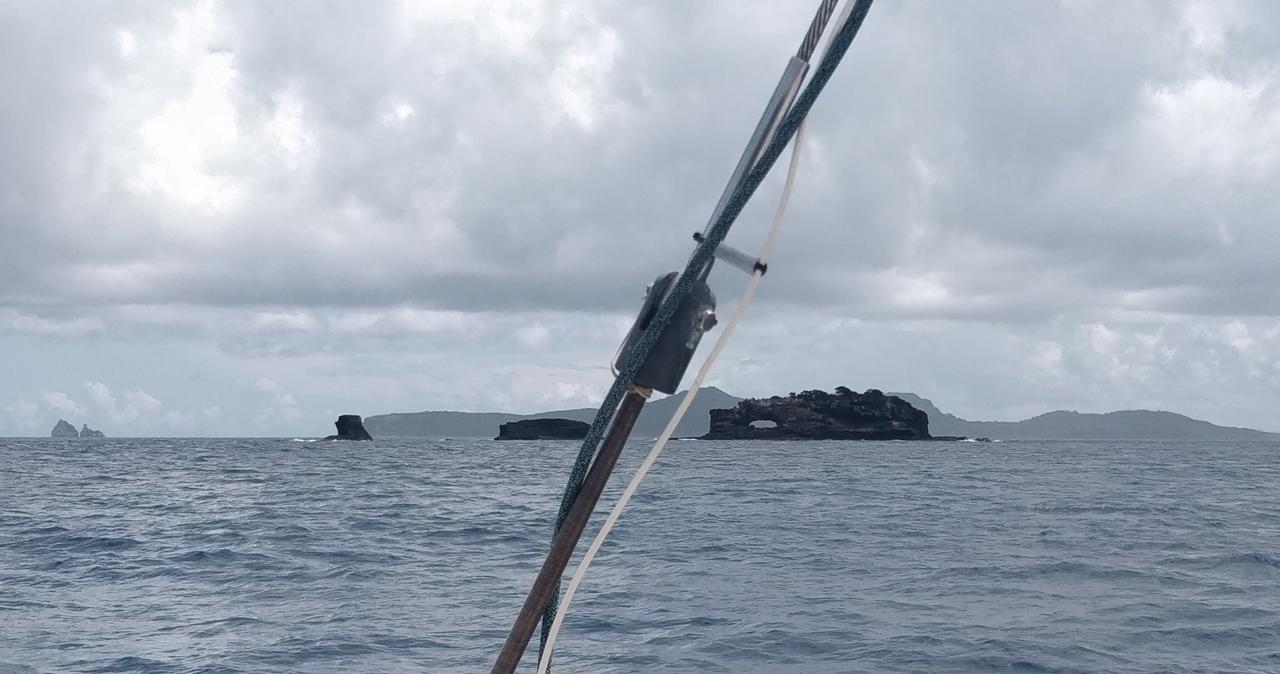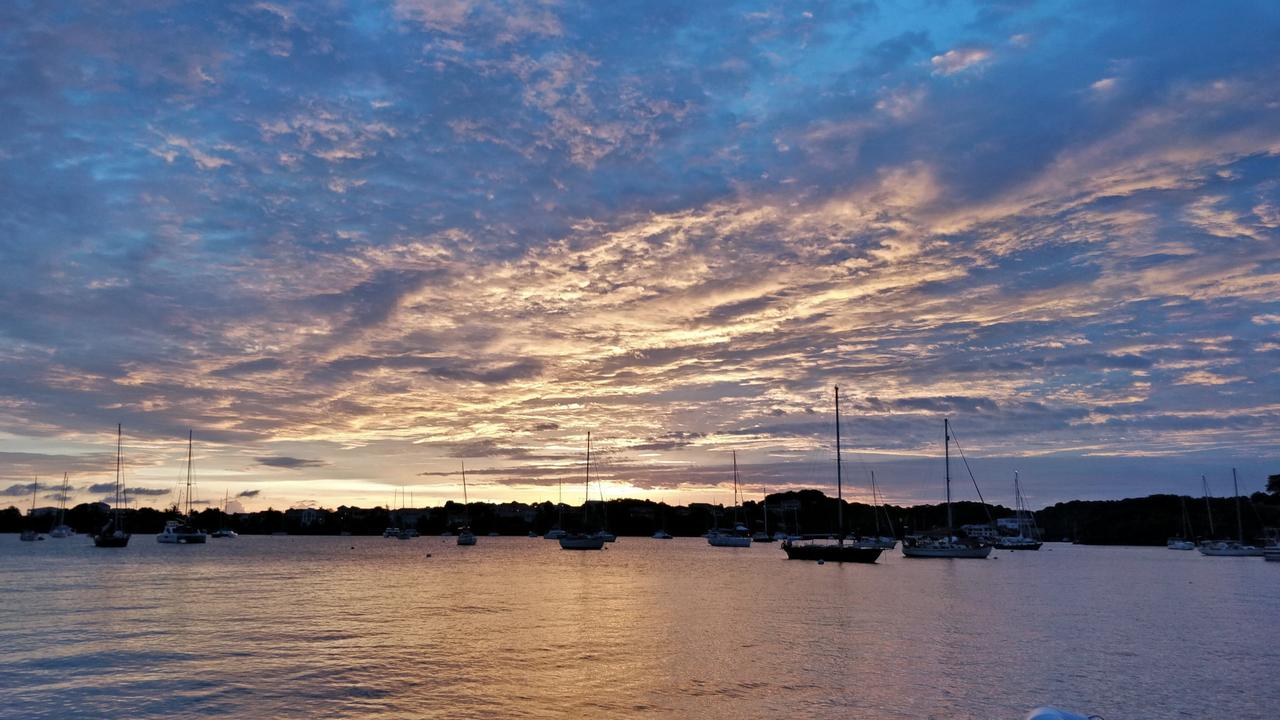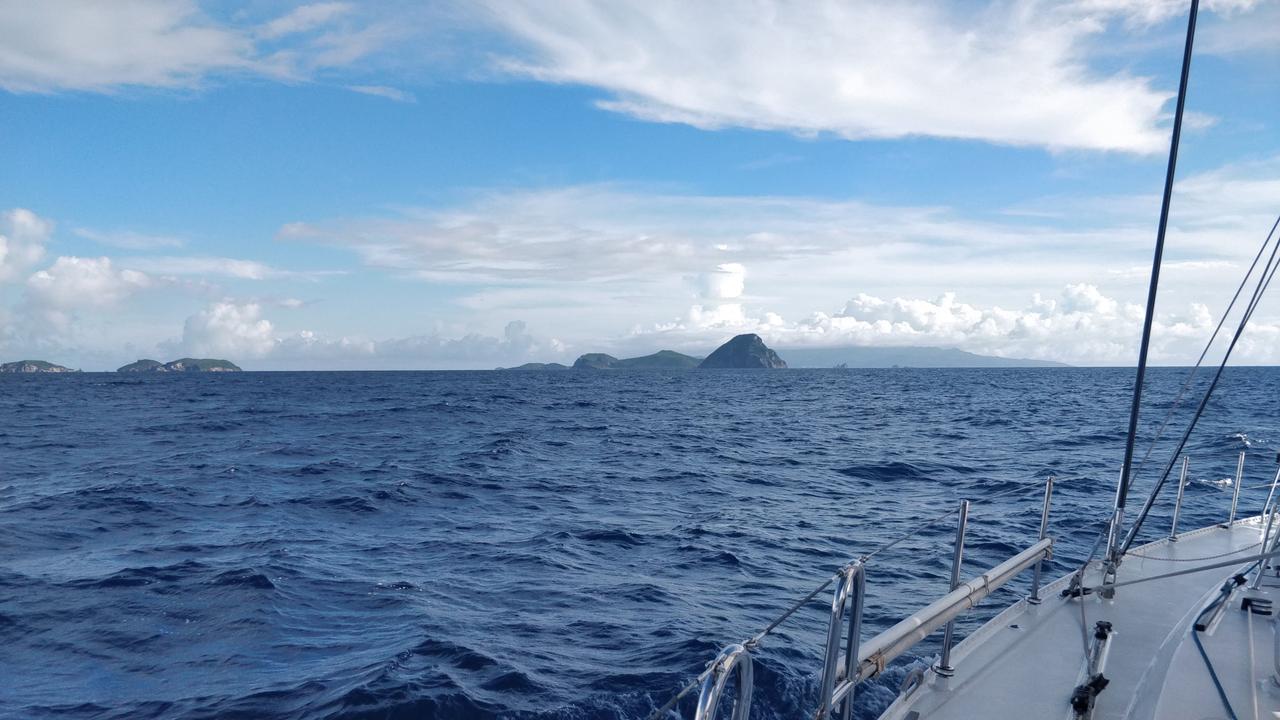A new season begins.
But first, there's a lot of yard work for us to do.
We gave ourselves 10 days to get the yacht ready, with the understanding
that we'd likely end up extending a couple of days. Everything runs on
Caribbean Time, us included. It gets very got in the middle of the day,
and having a nap in an air-conditioned room just seems like the right
thing to do... :)
The pre-launch list was long.
The critical things were to get the bottom painted and install some
(mostly electrical) equipment, while we had access to parts and help.
The dinghy was also due for a re-paint, topsides and underneath.
John and Clare concentrated on the paint, while I was digging in the
boat's navigation instruments, figuring out how things were wired and
trying to improve the setup.
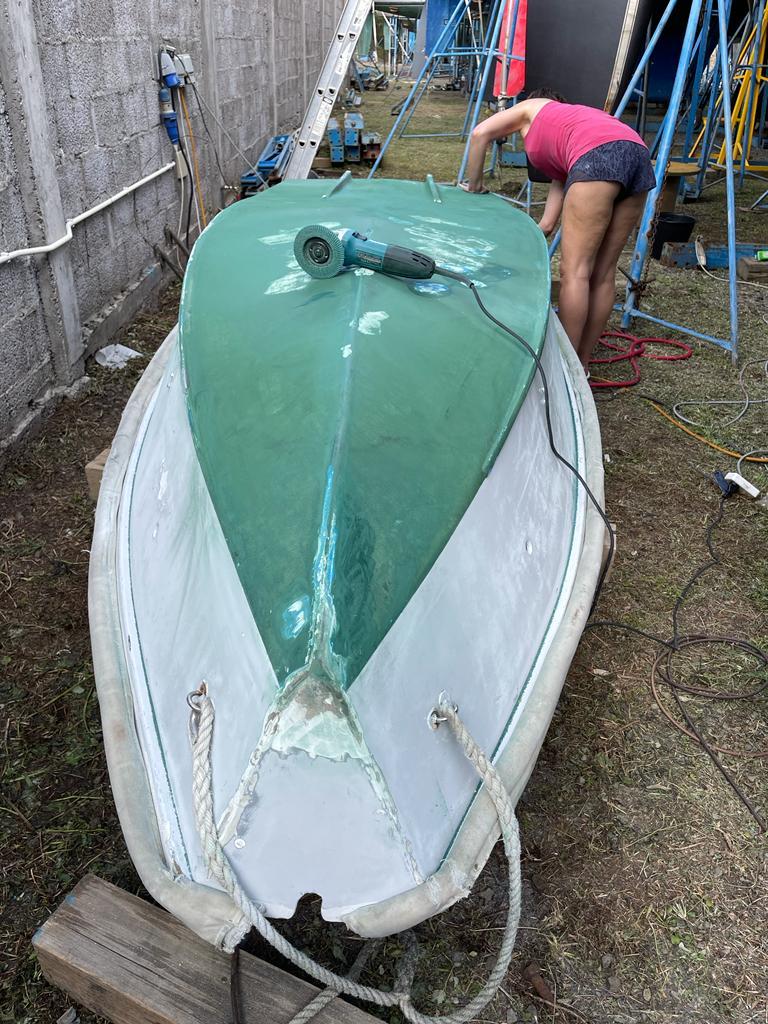
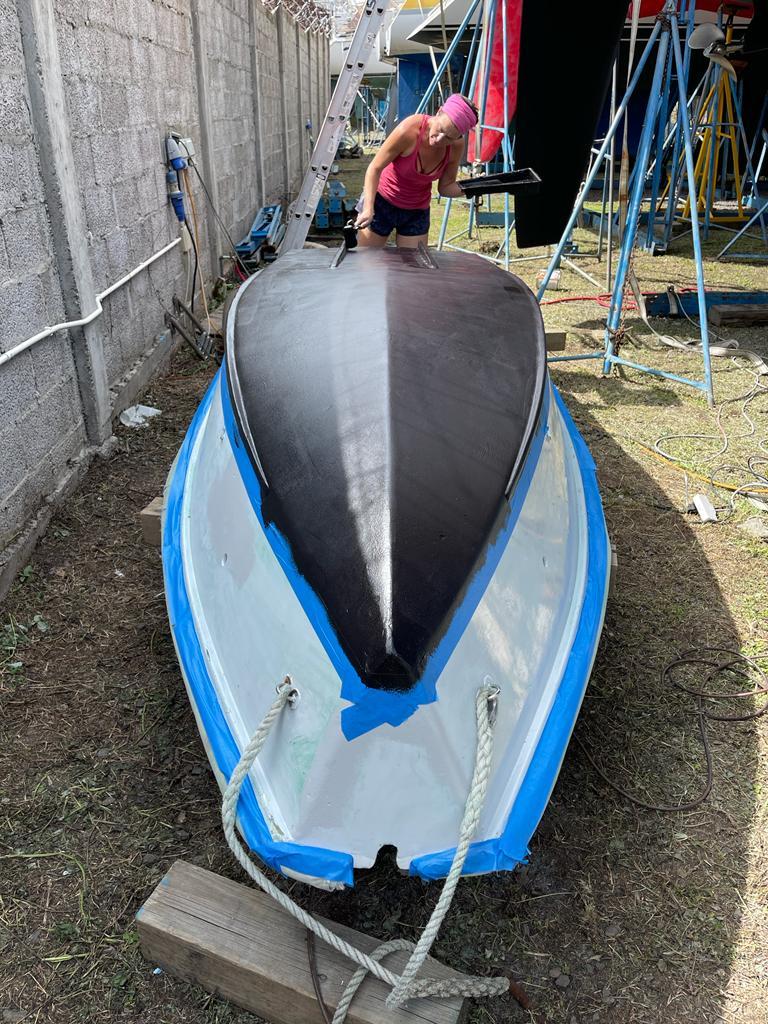
At the moment, we can't use the boat's VHF radio, without turning on all
the navigation equipment, because it gets its GPS position through a
convoluted NMEA 0183 chain.
And if it doesn't get a GPS position, it complains loudly.
This should have been easy to fix, just connect it directly to the GPS's
NMEA output.
However, that upset the chart-plotter, that receives DSC Distress
Messages
from the VHF radio over NMEA 0183.
After a lot of fiddling, I concluded that the way things were wired
before was the only way that kept the chart-plotter happy. So be it.
At least I understand why things are the way they are, now, and have the
network documented.
The big electrical change we needed to make was to install a Battery
Monitor (a Victron BMV-712).
The existing monitor was ancient and we could only gauge state of charge
from a voltage reading.
We got this professionally installed, as we were expecting to have to
re-wire the battery banks to accommodate it.
In the end we kept the current wiring to save a lot of time.
The batteries will probably need to be replaced at the end of the
season, and that would be a good time to re-design the system.
The boom vang's gas struts were at the end of their life, when we bought
the yacht. Rather than replace them (for another couple of years' life),
we decided to replace it with a stainless-steel sprung vang.
The local riggers at Turbulence provided and fitted it.
We removed the some big chunky electronics, an old CRT TV, DVD player,
and CD changer, freeing up a cupboard in the saloon.
The WiFi router and Raspberry Pi can live in there, instead, with lots
of room for other storage.
Cleaning up the wiring for it meant getting the ceiling panels down for
the first time, and cutting our first holes in the aluminium structure.
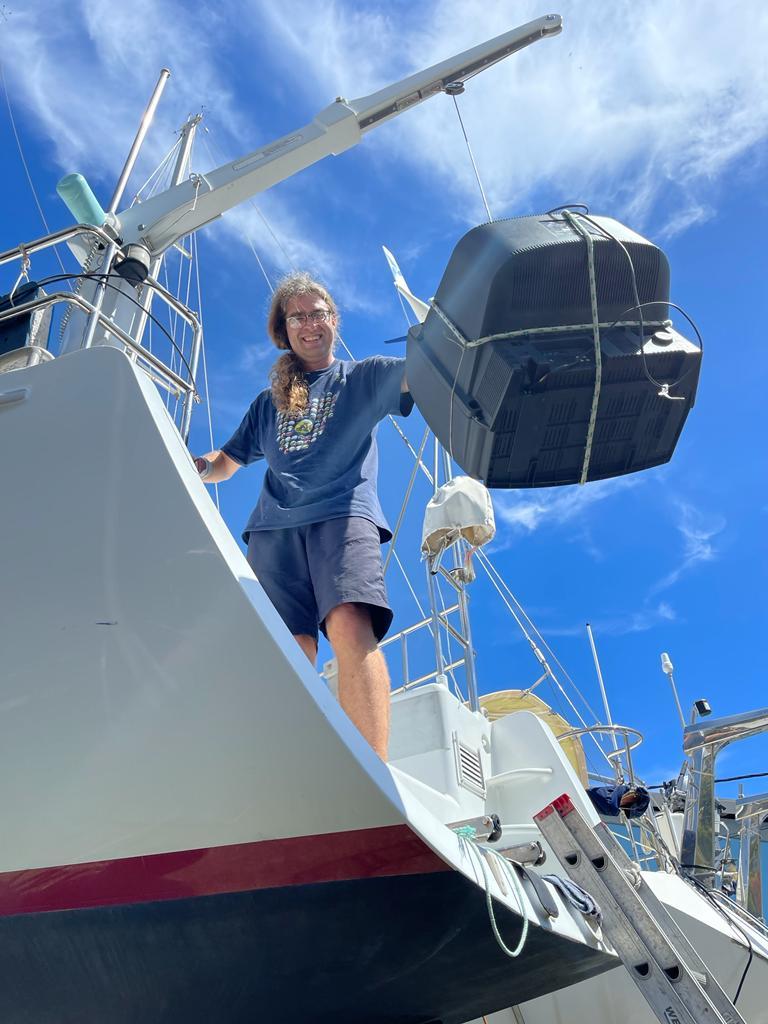
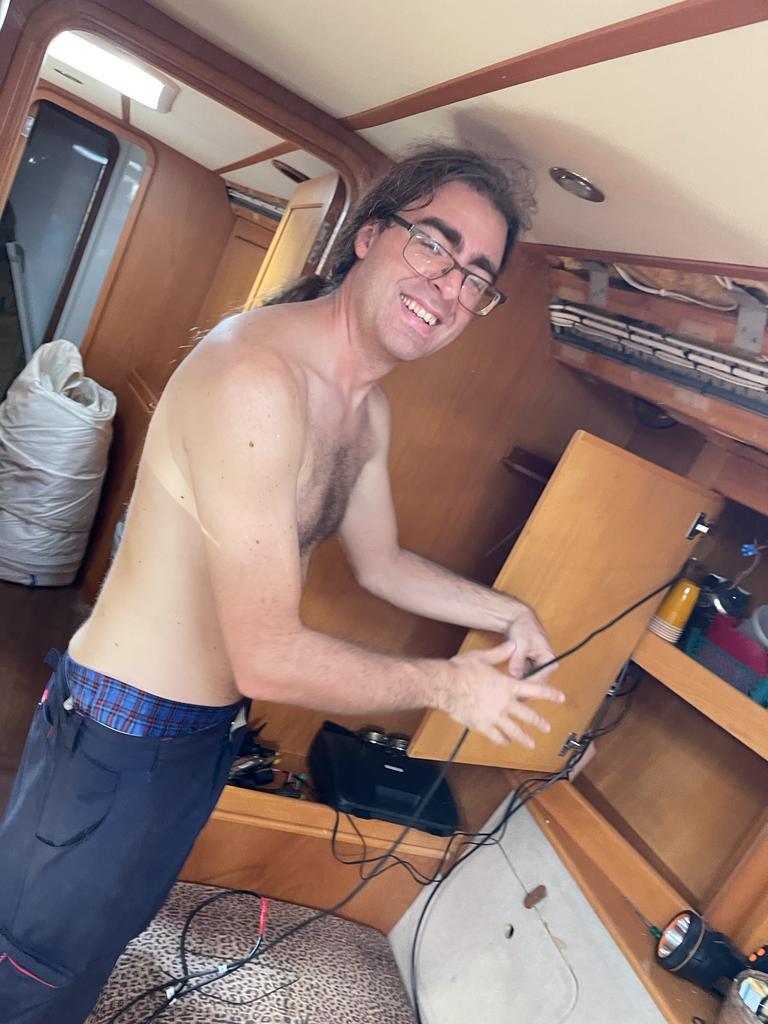
While this was going on, John and Clare cleaned salt off the water-line
of the hull, with acid, lightly sanded the old antifouling paint, and
painted new coats on.

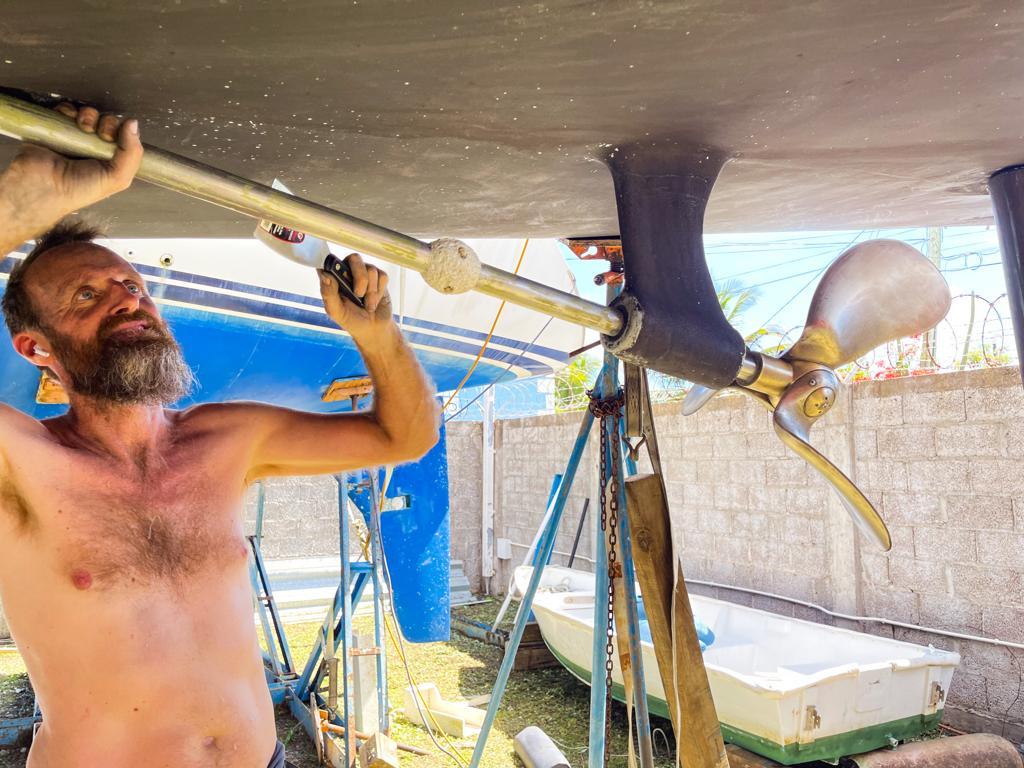
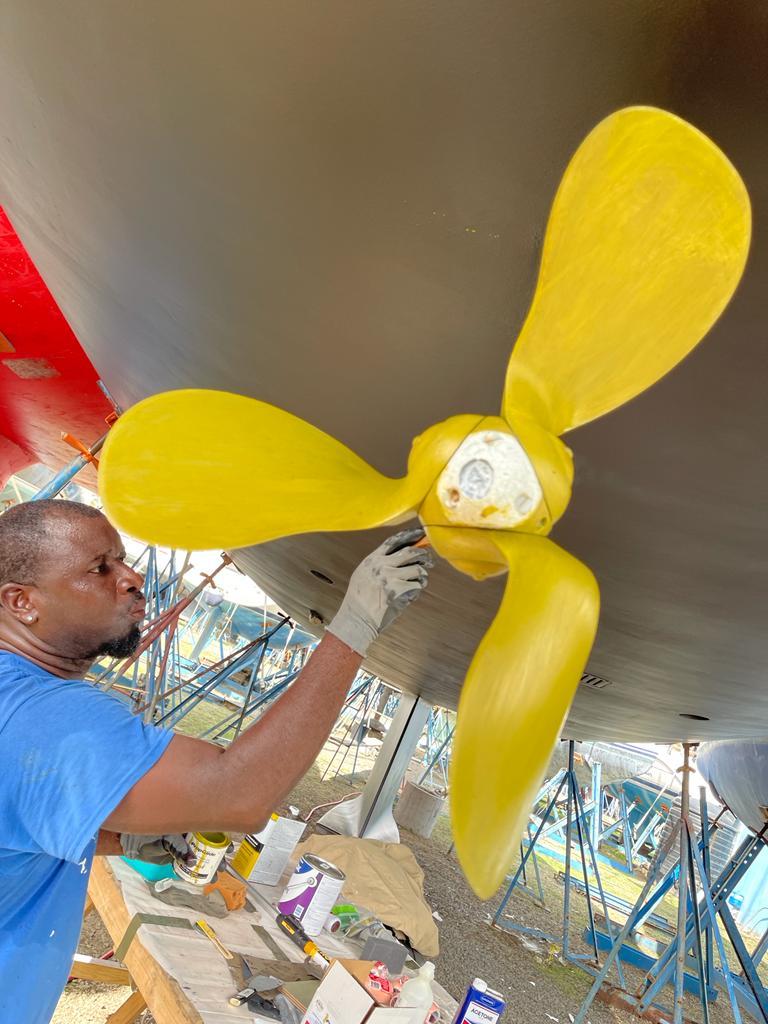
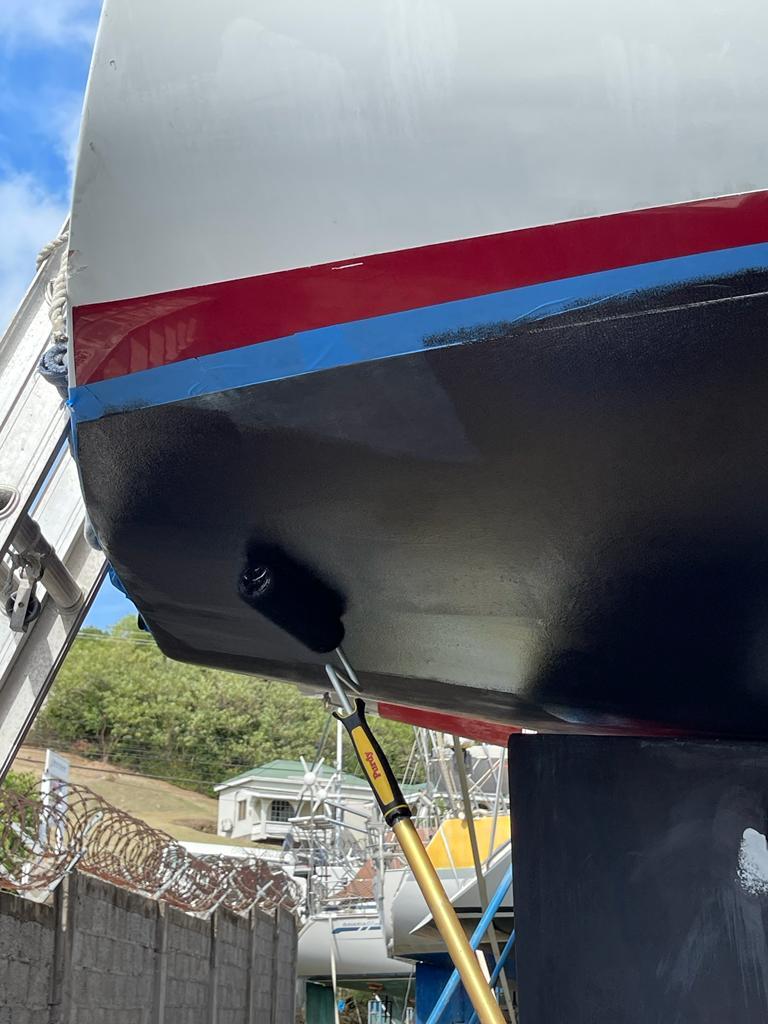
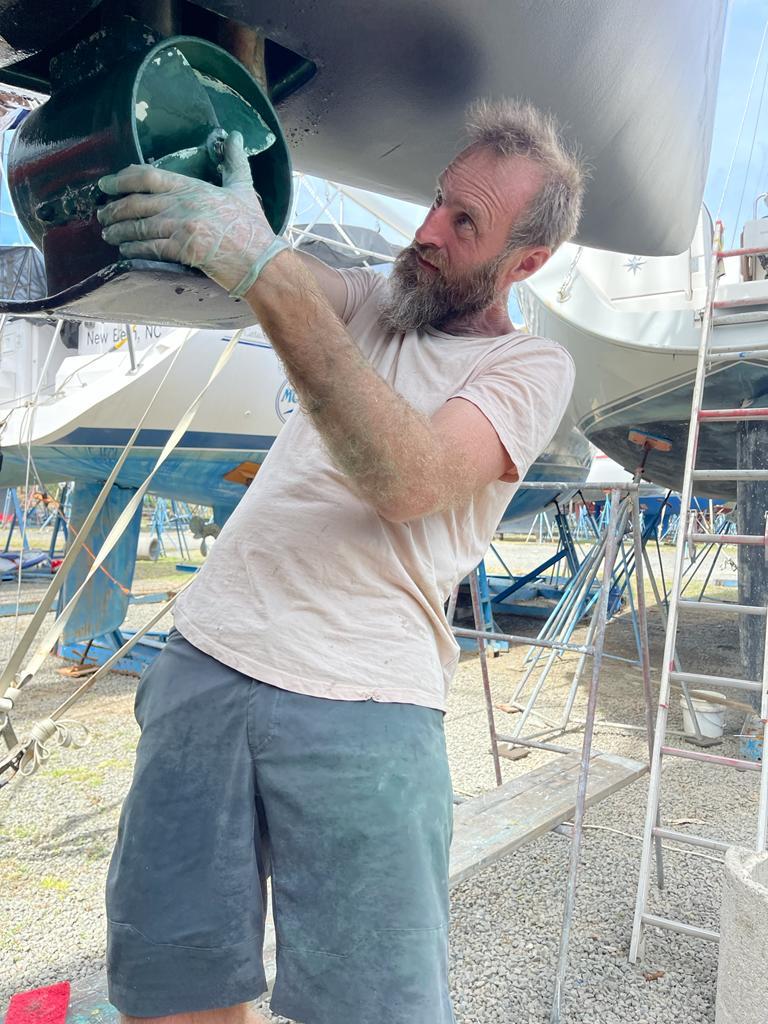
I got the help of an electrician's assistant, for a day, and we ran
cables for some USB charge points, a UV water filter, and an AIS
transceiver.
I didn't realise that the AIS transceiver would require its own GPS
antenna (I assumed it could be fed from the boat's NMEA 0183 bus), but
it did and we ended up sticking an old passive GPS antenna we found on
the yacht, up above a ceiling board in a spot that got good reception.
Less than perfect, but it works.
Ships can now see us on their charts, and you can follow our position
online.
The engine got the rest of its annual service, replacing the sea-water
impeller and coolant.
The generator got a new impeller, too. Far easier to get that one out
than the engine, which was a long hard fight that my knuckles are still
recovering from.
I won't go into all the other jobs we did. But there were many.
The main head got a rebuild, with a new motor and impeller, for example.
We drove around the island a little, mostly in pursuit of boutique
fabric for cushion covers, but also after good local food, especially
jerk chicken, and roti.
Sandra's Roti came highly recommended, and was fantastic.
